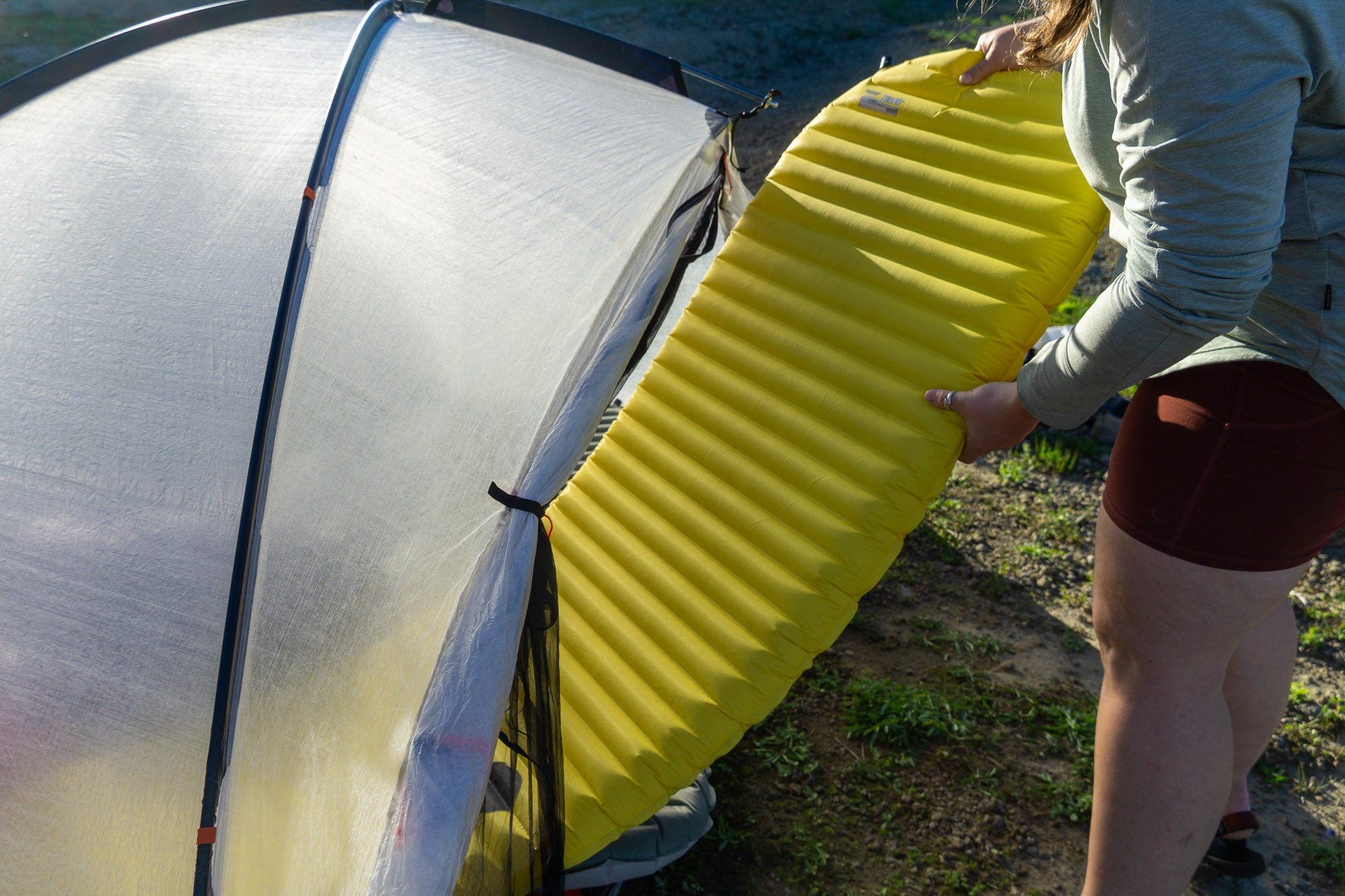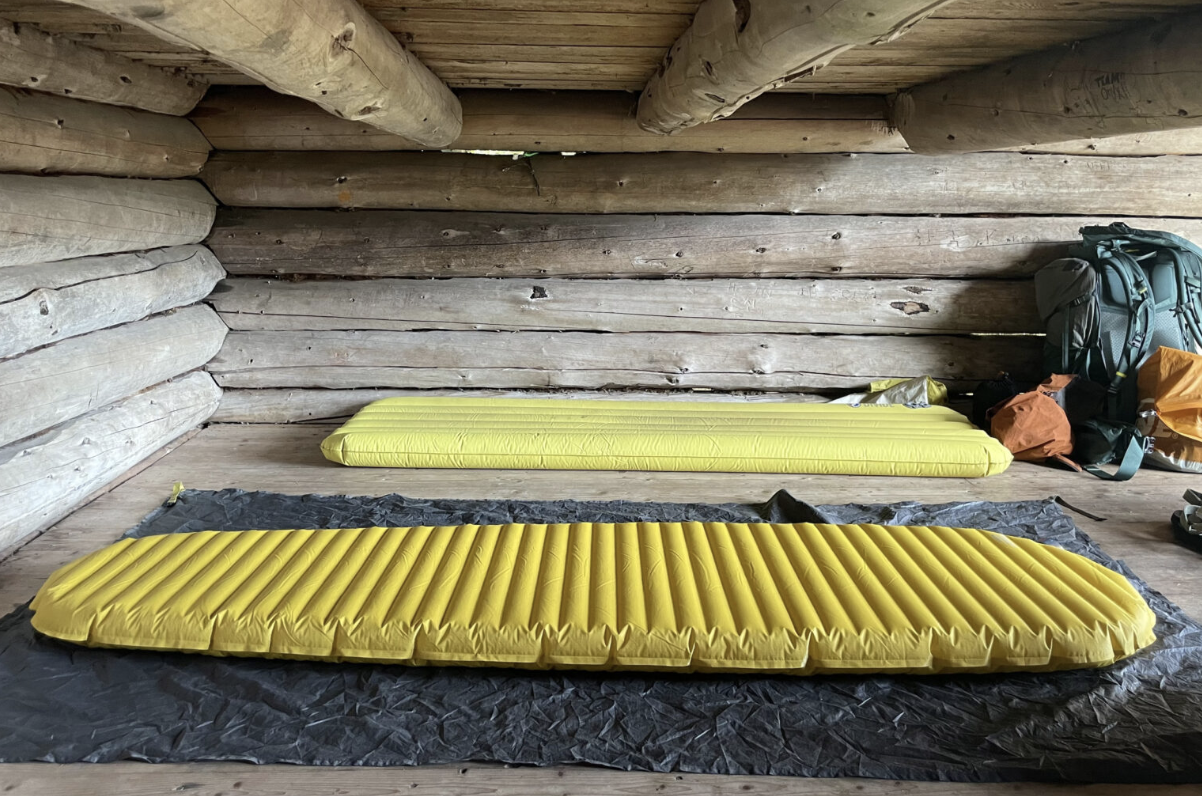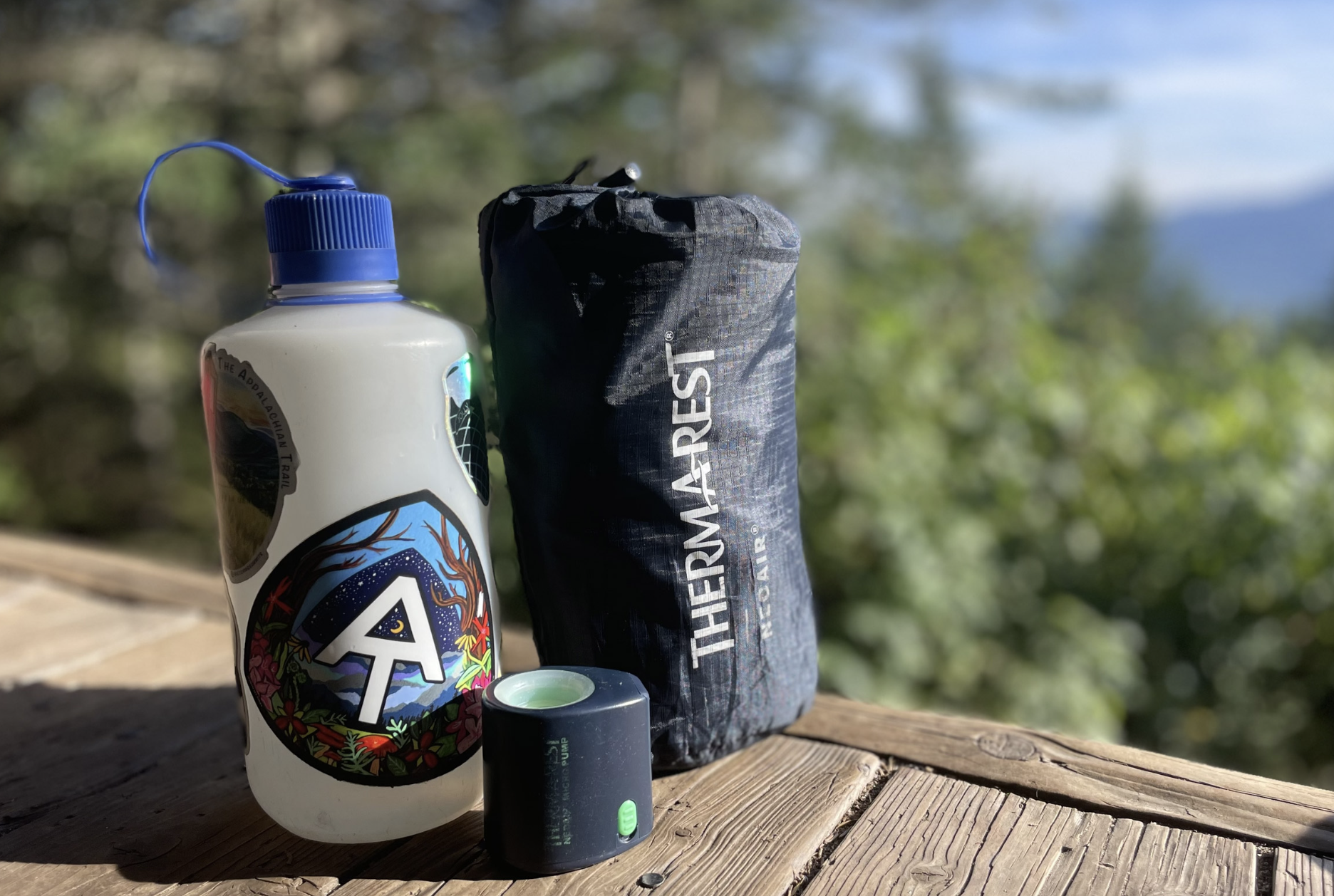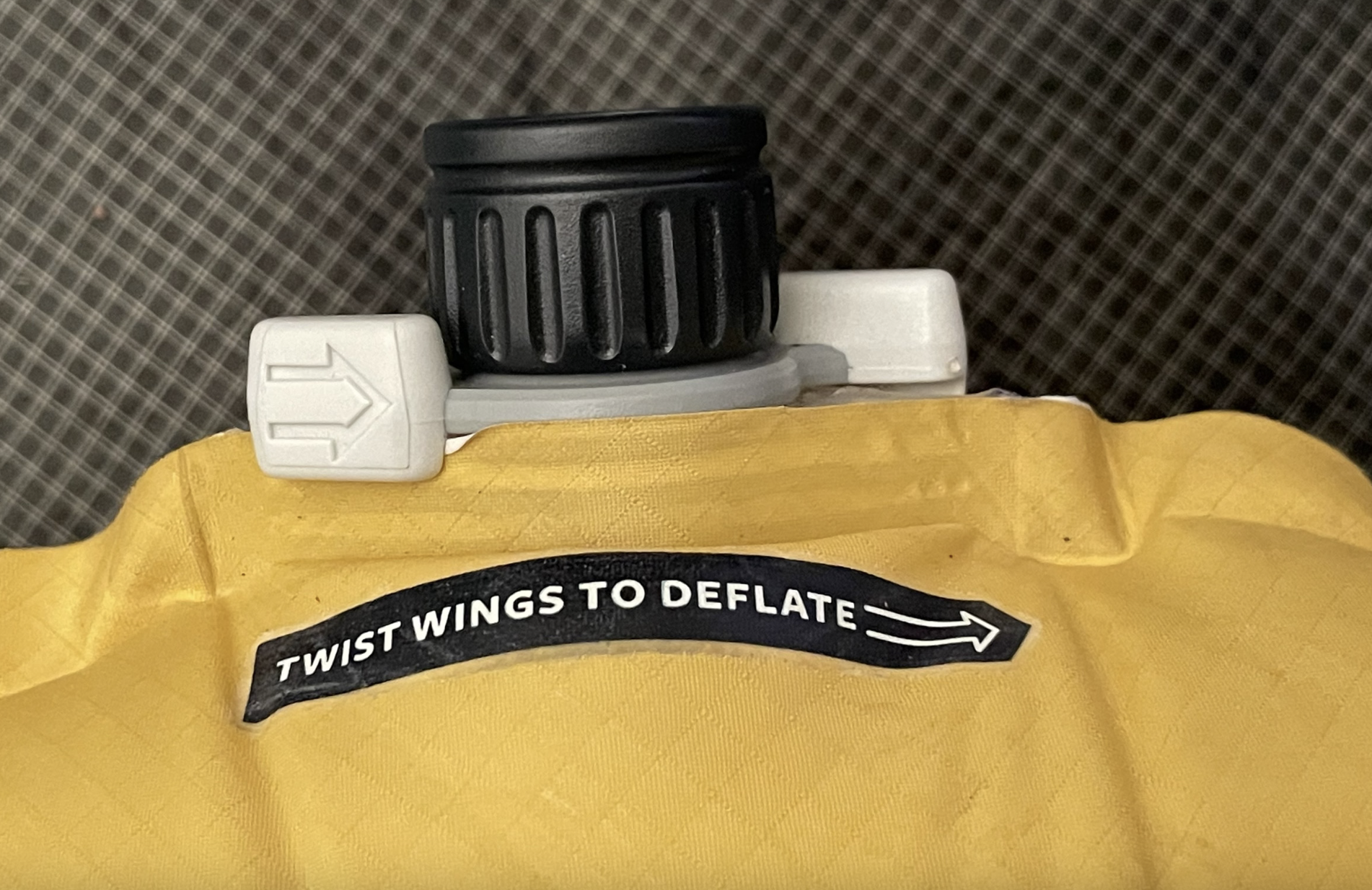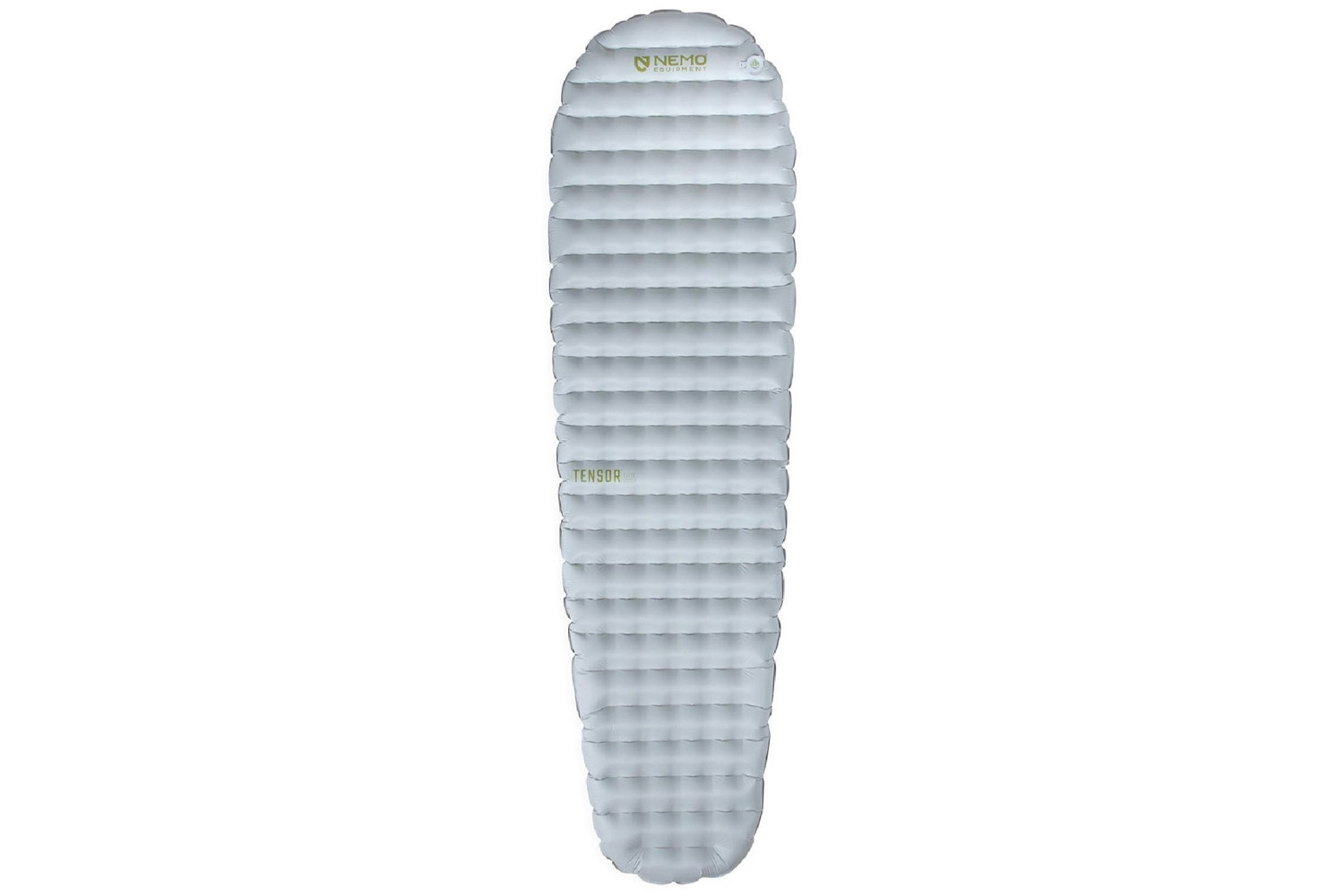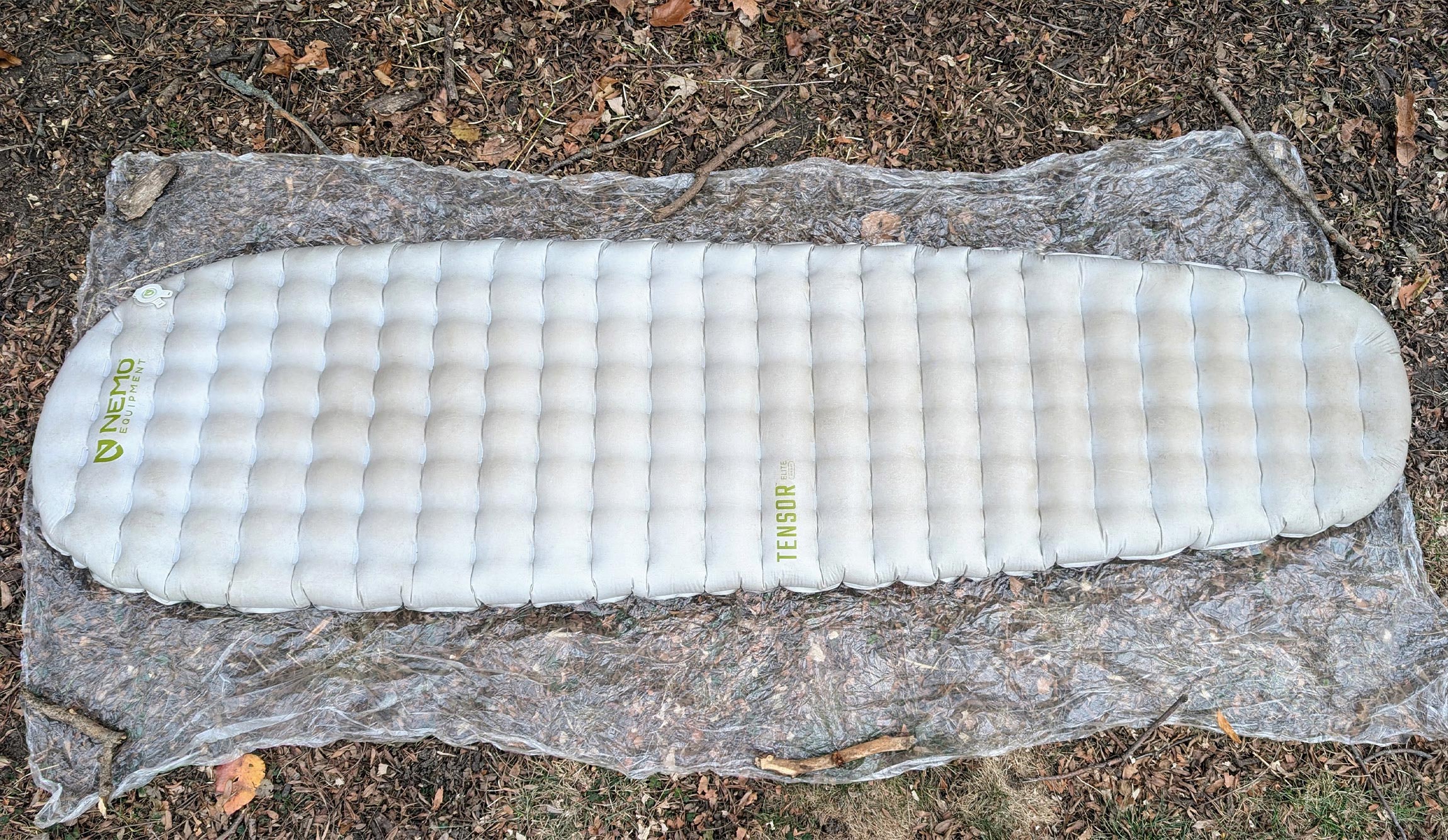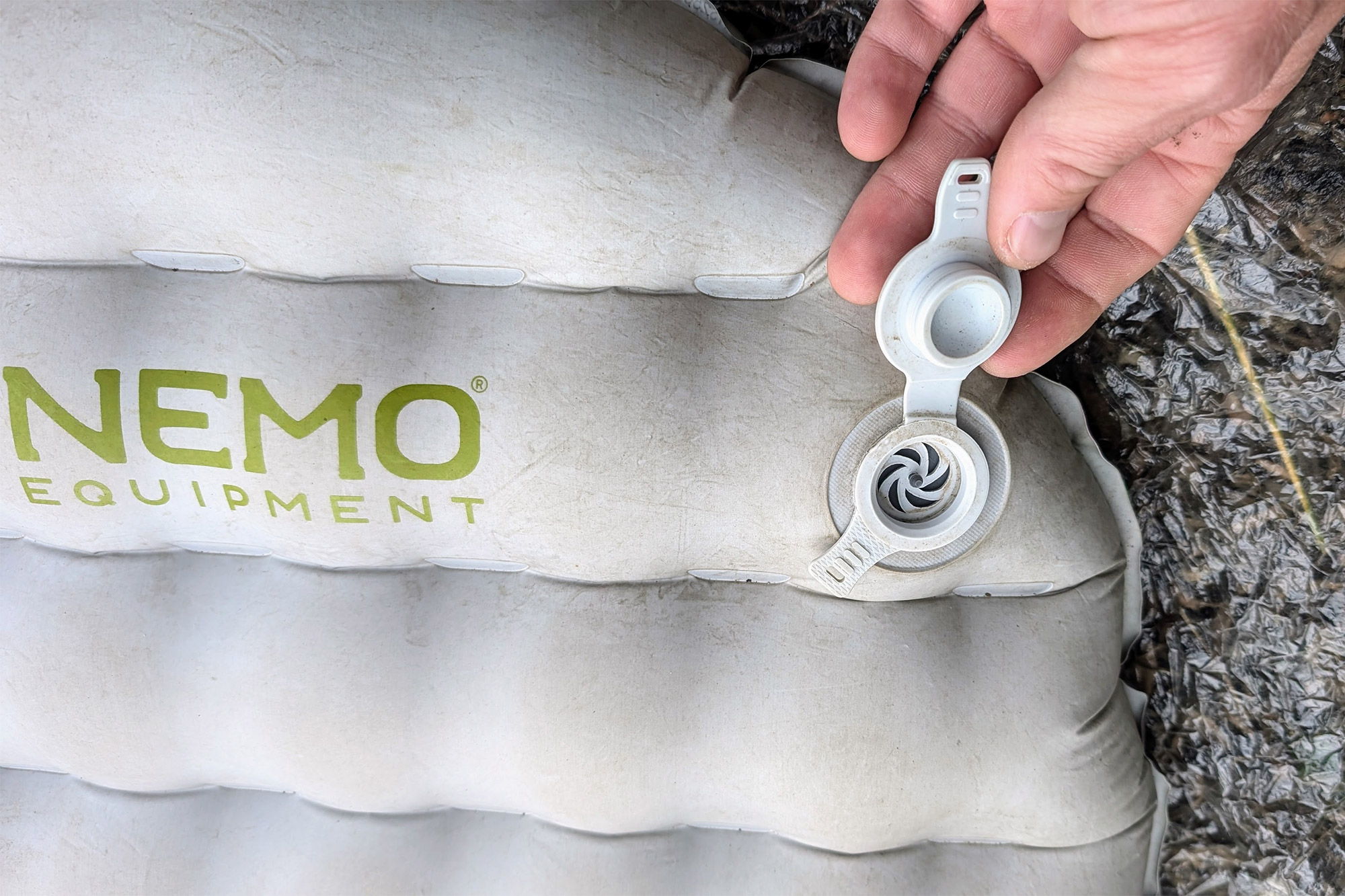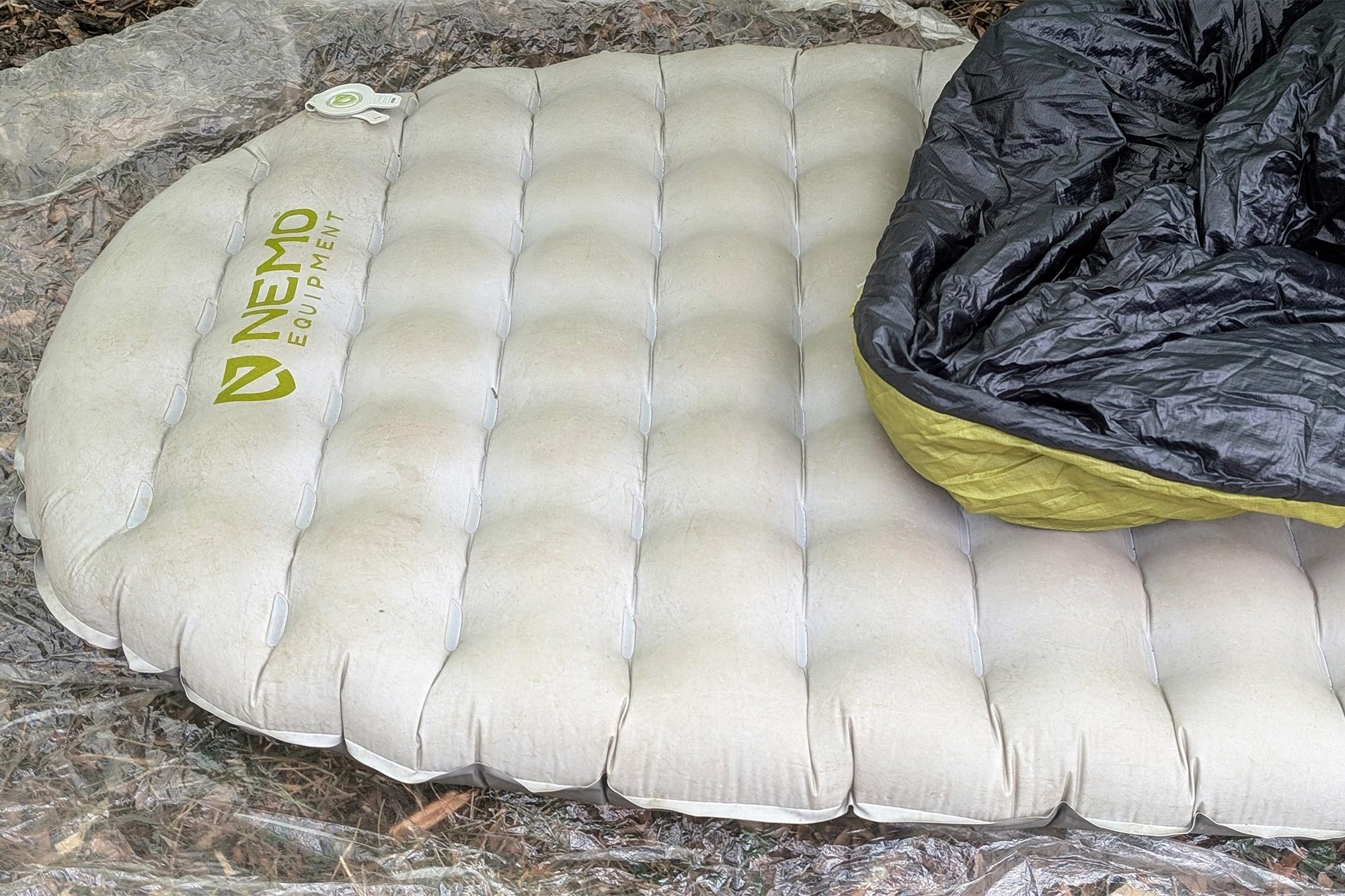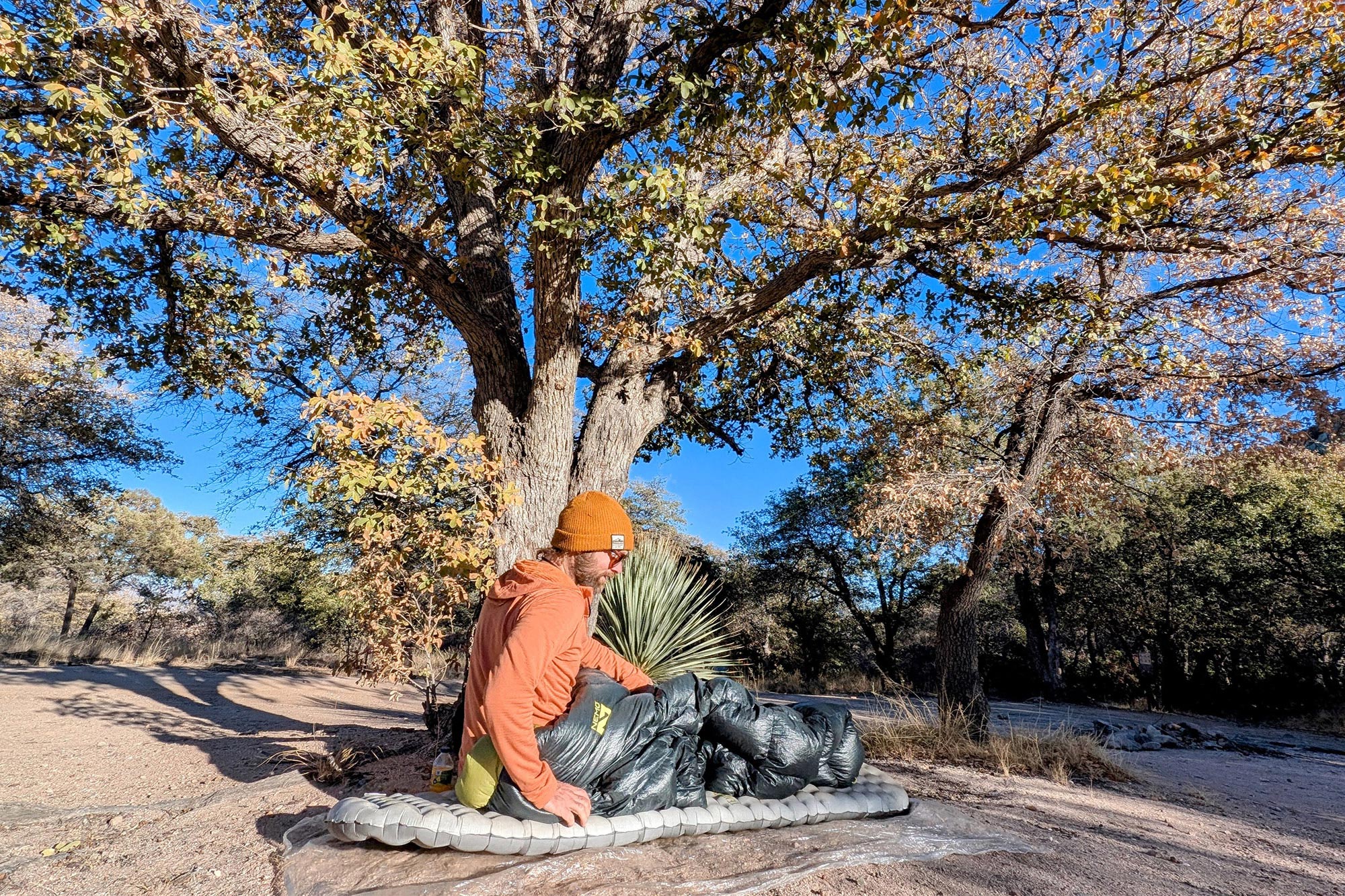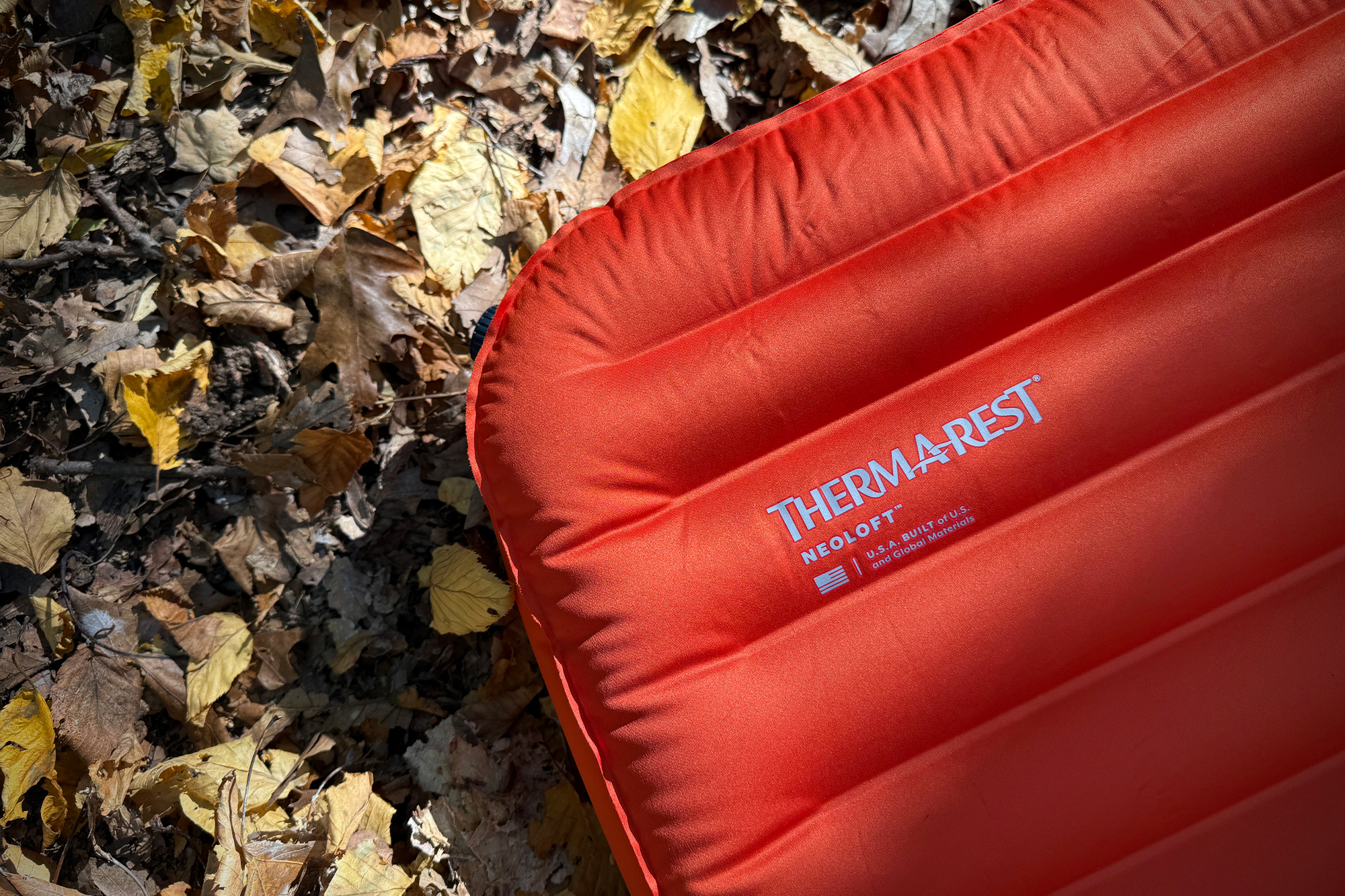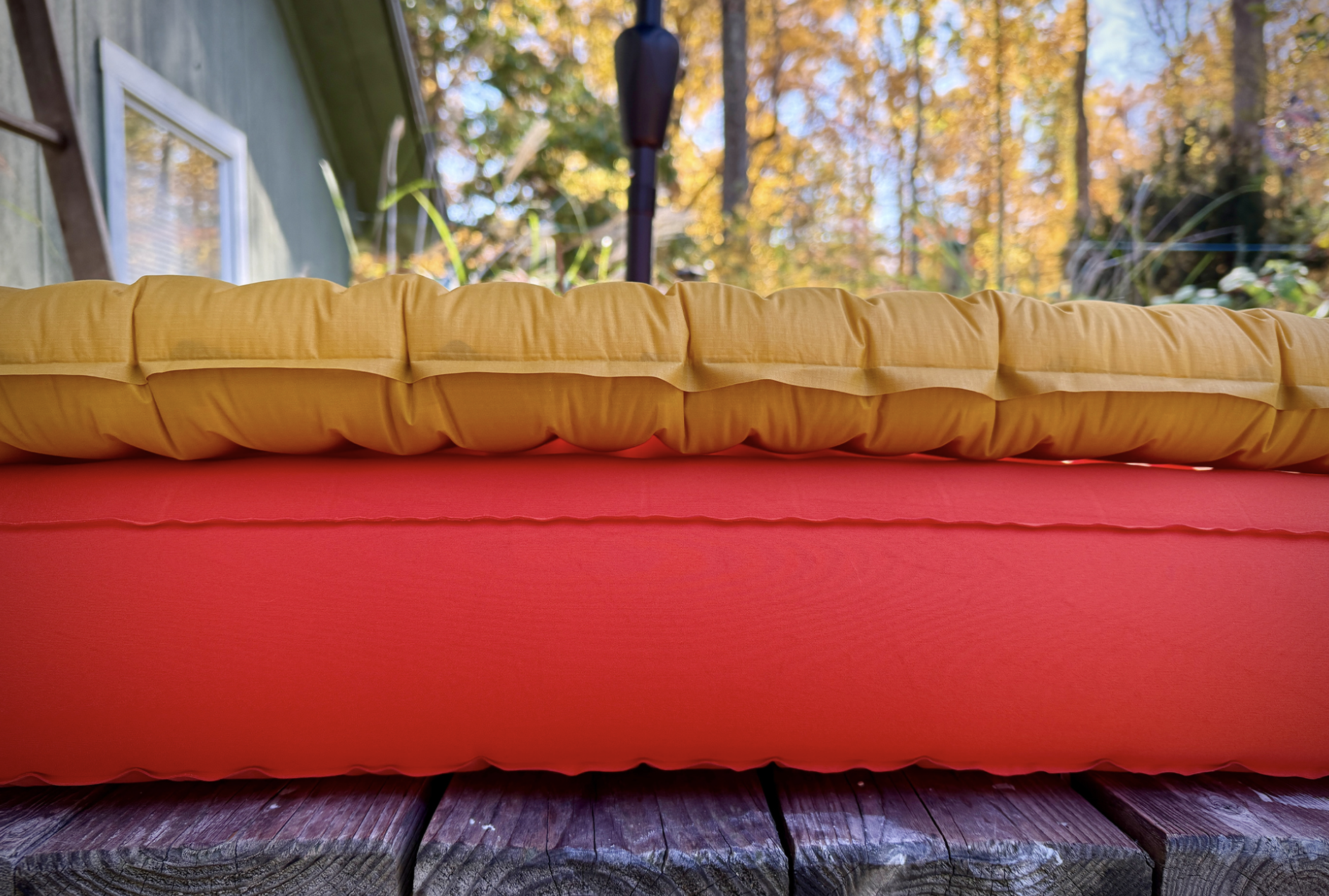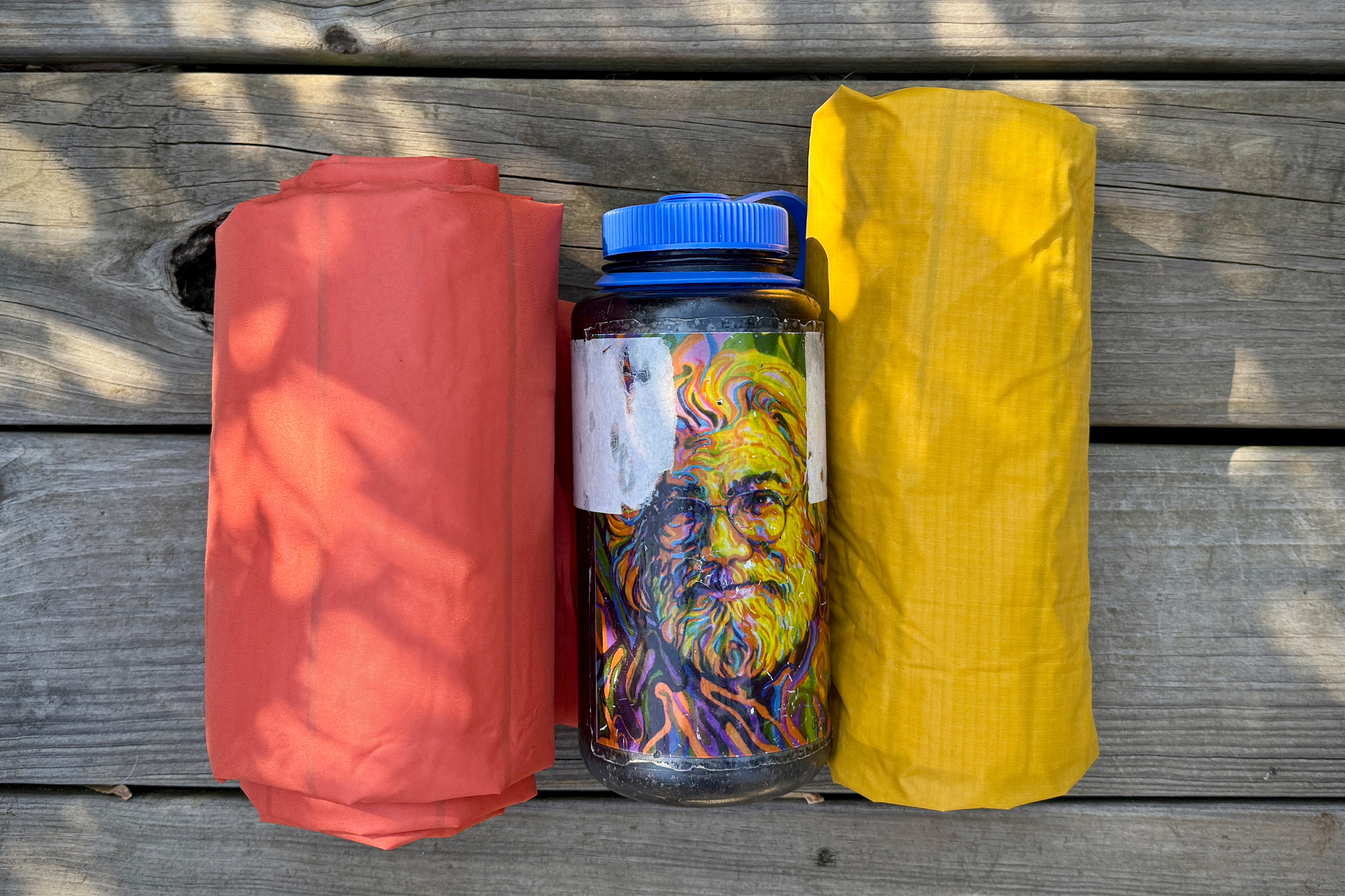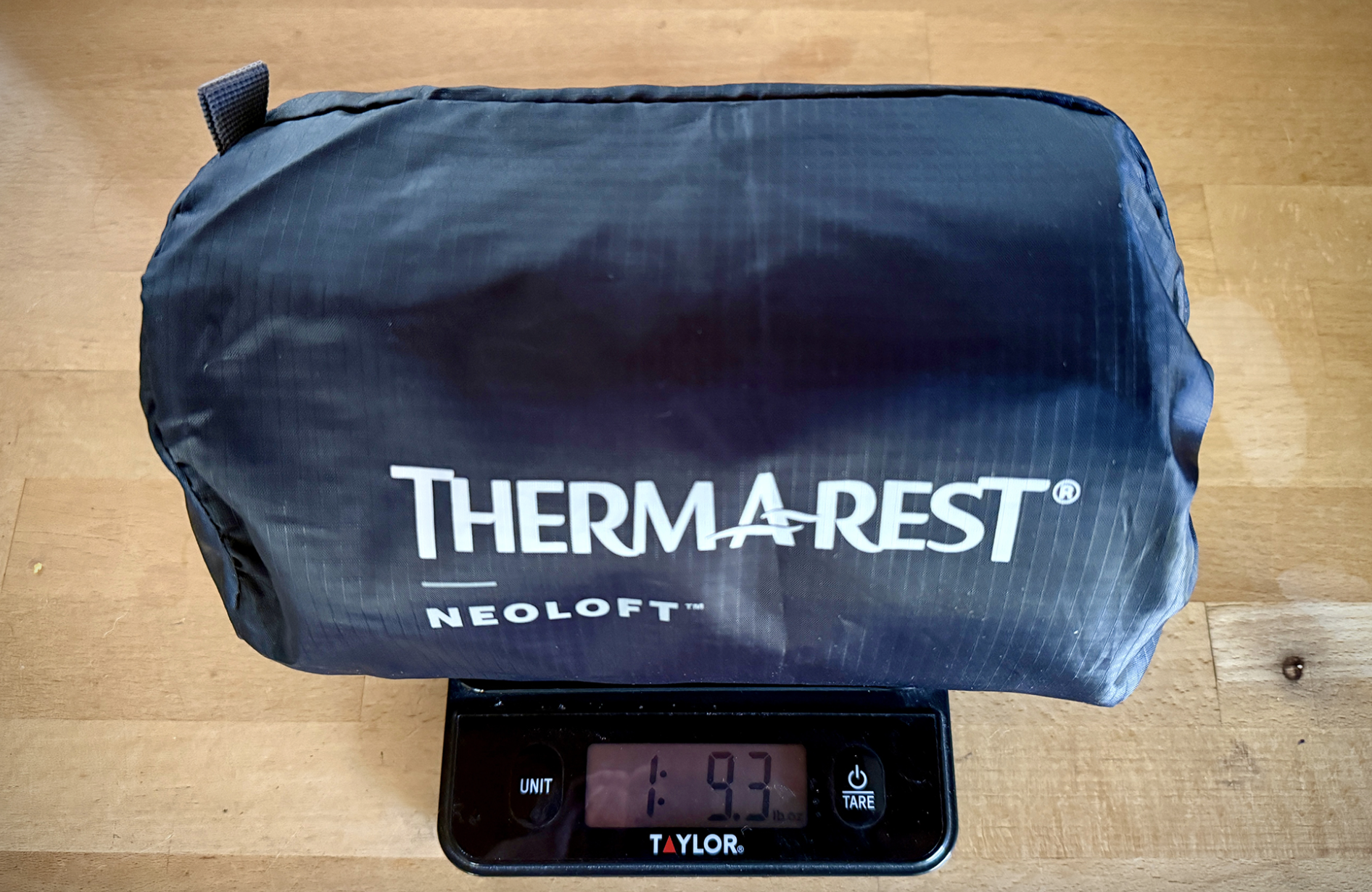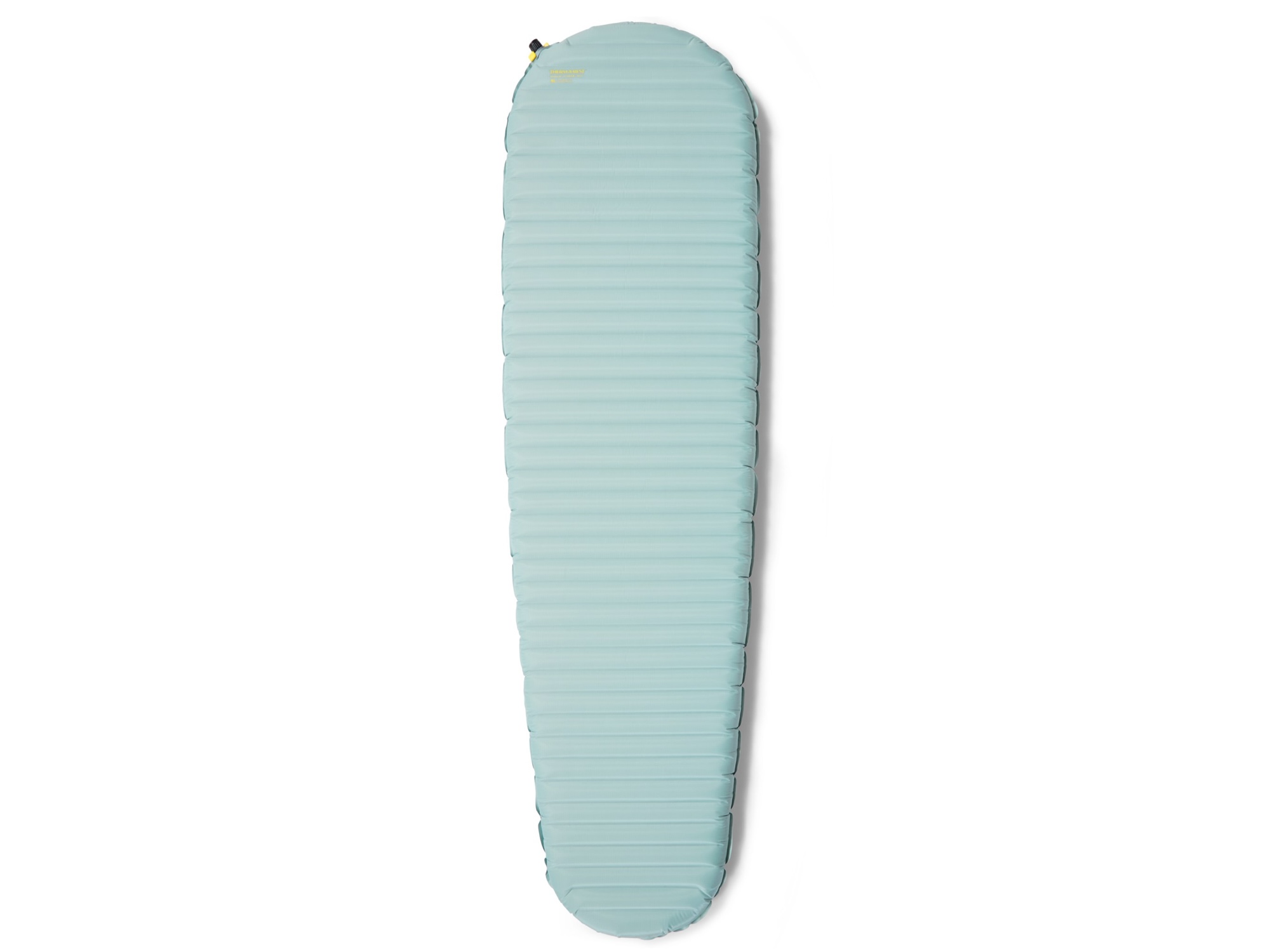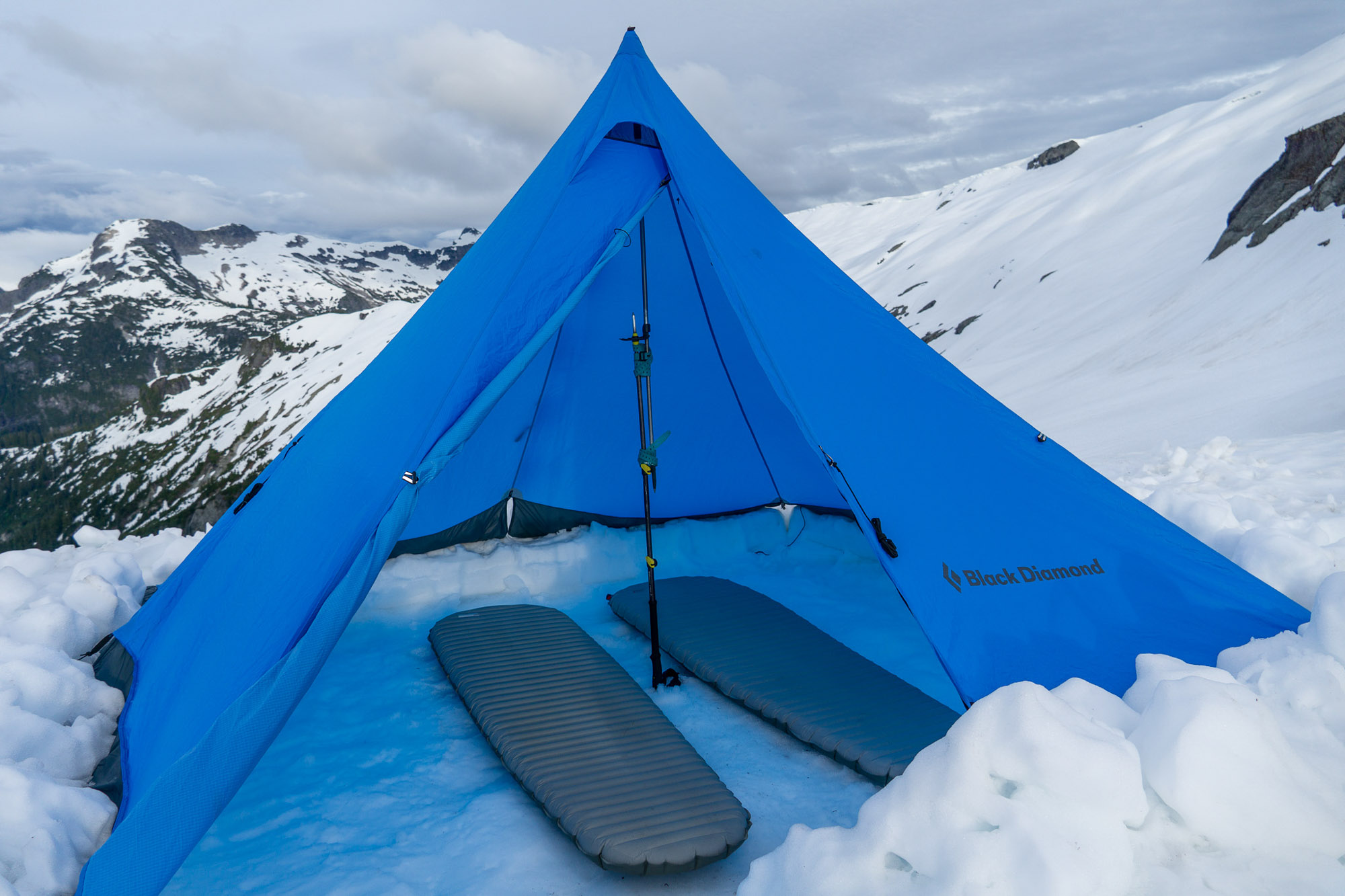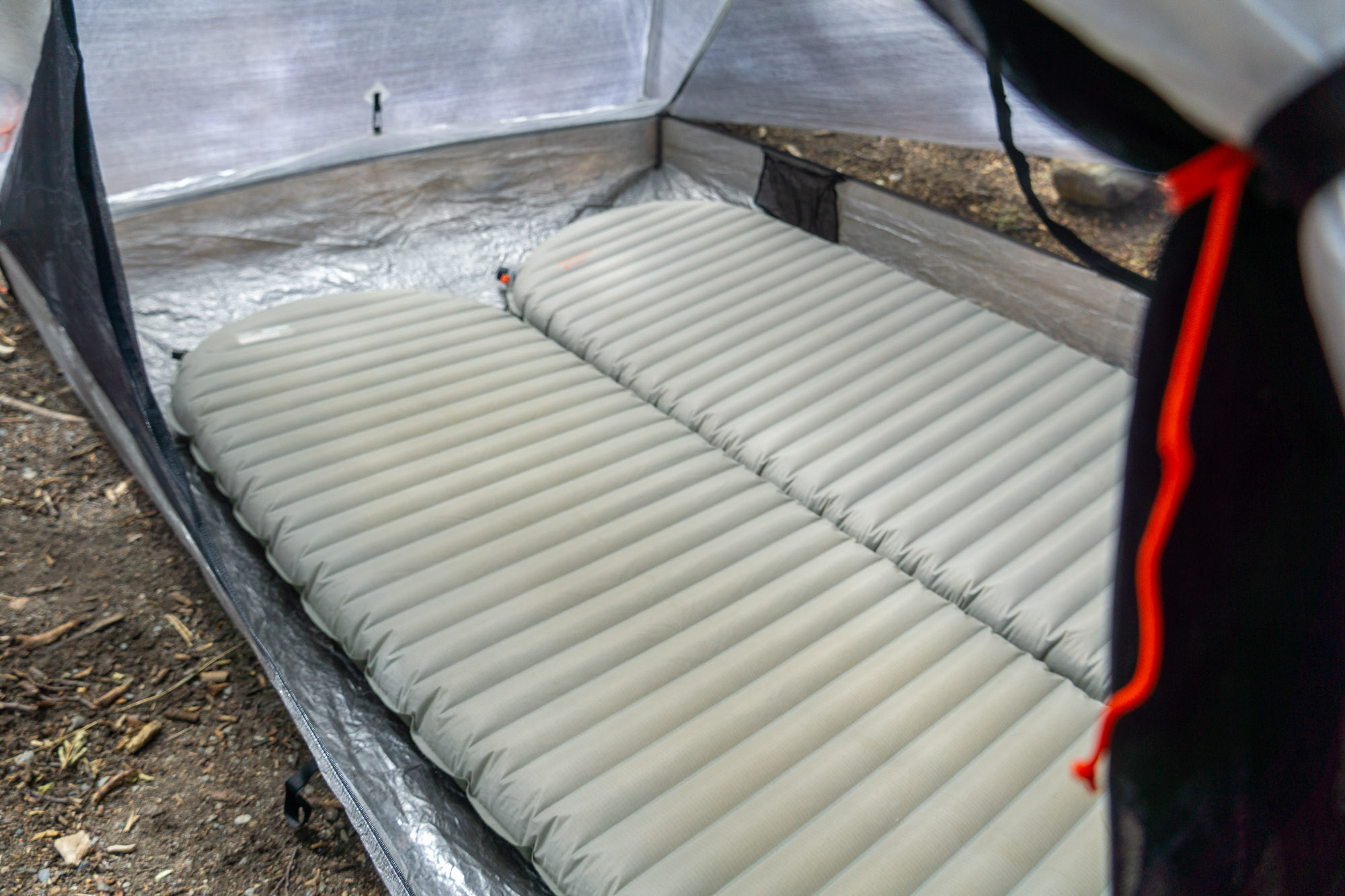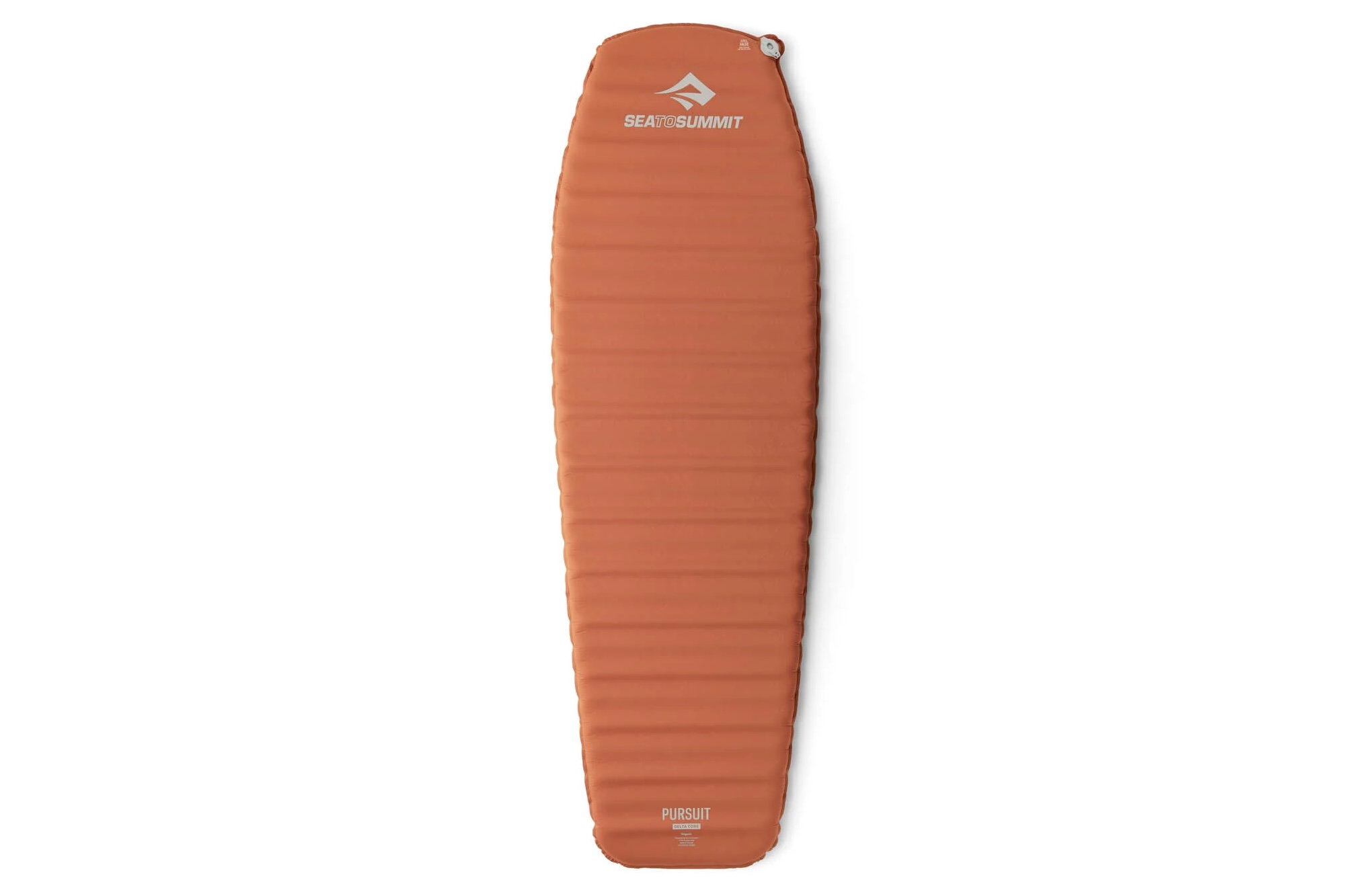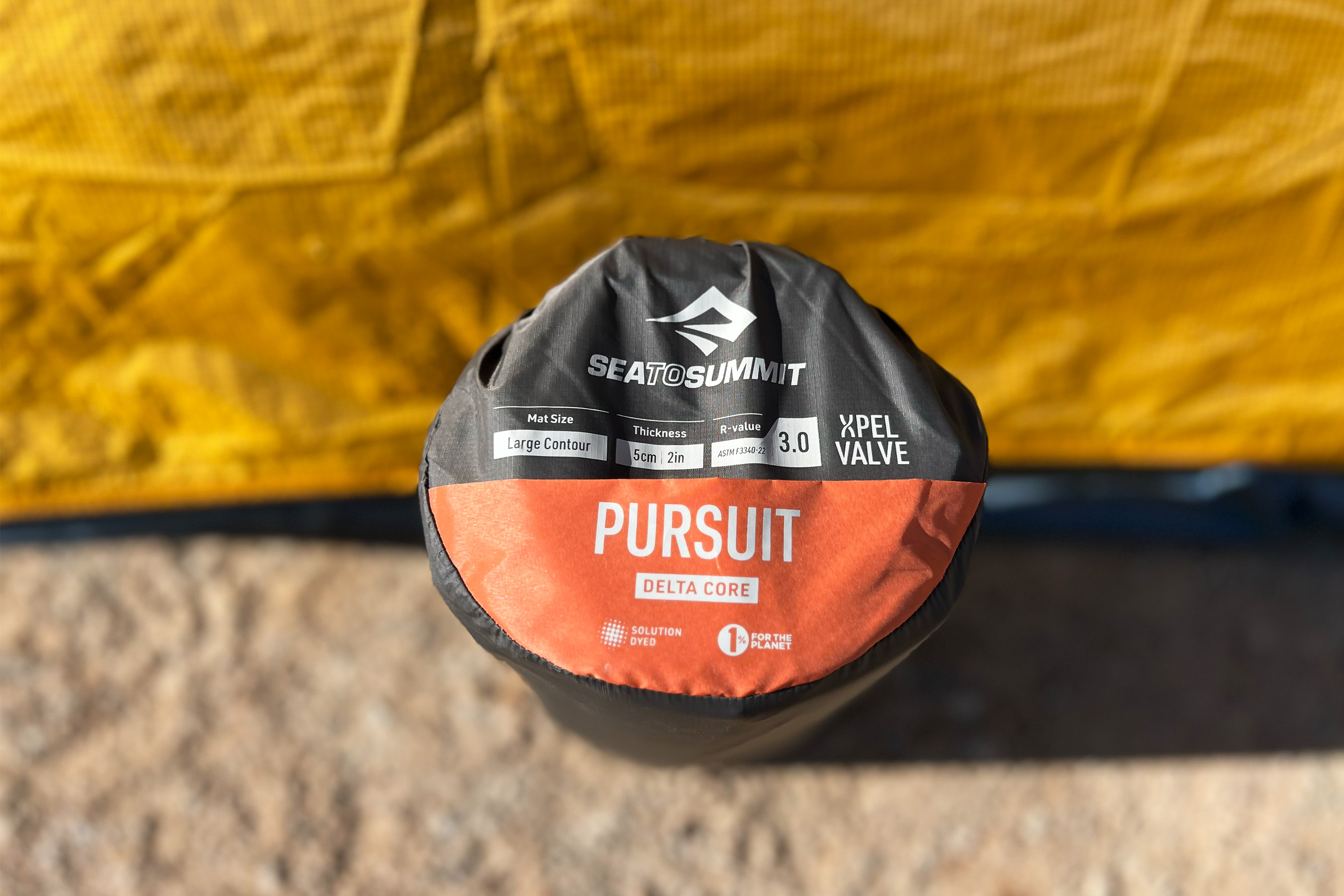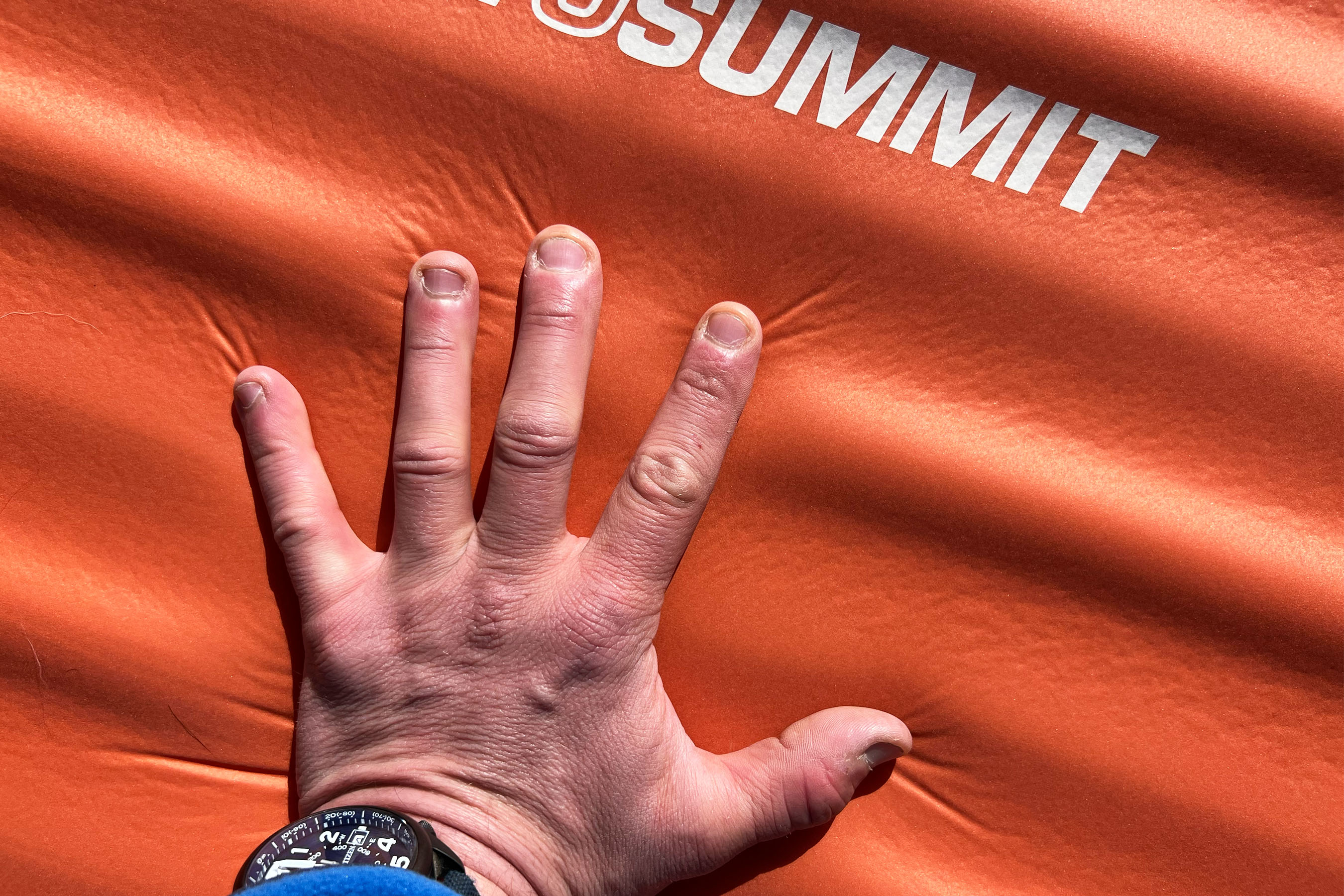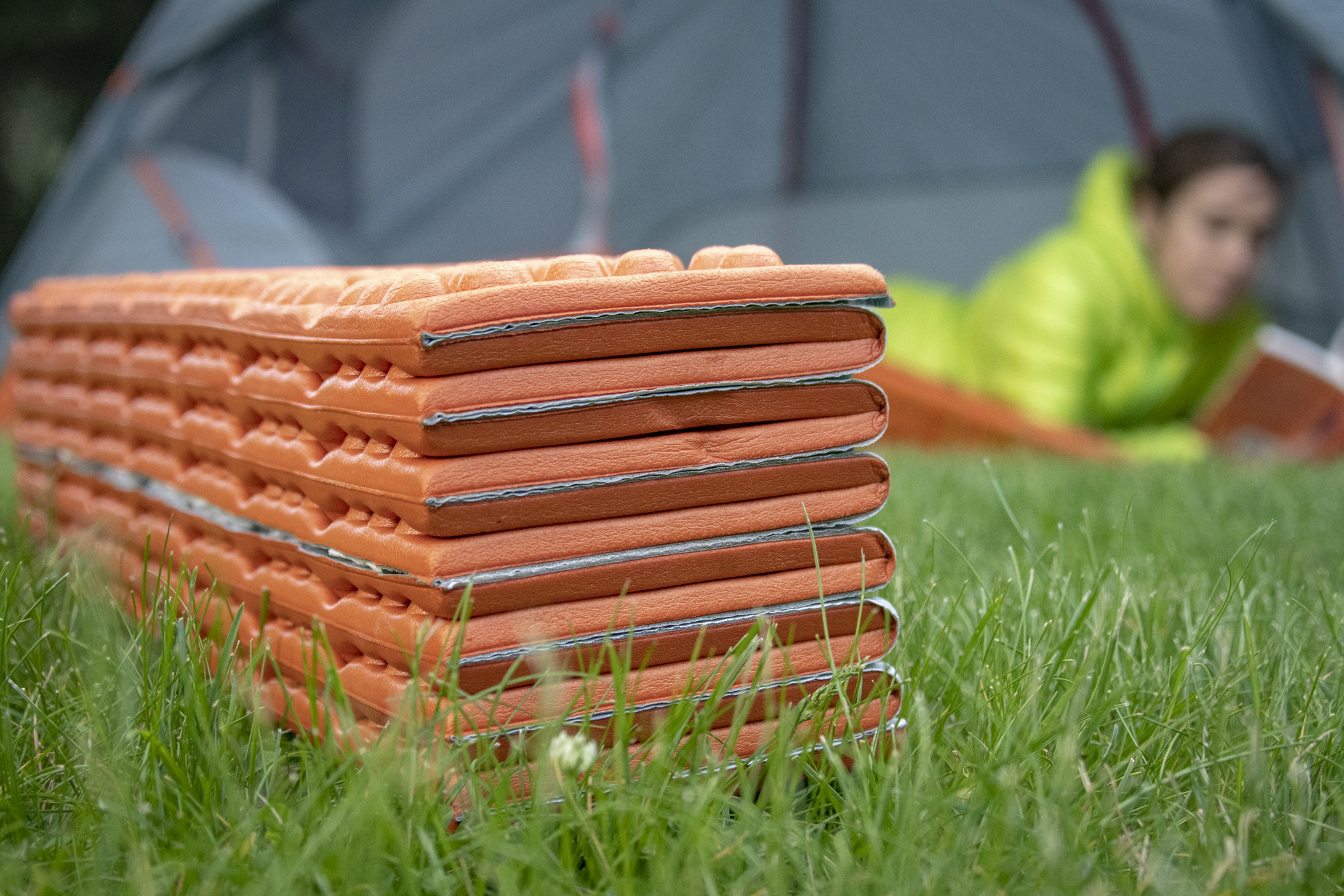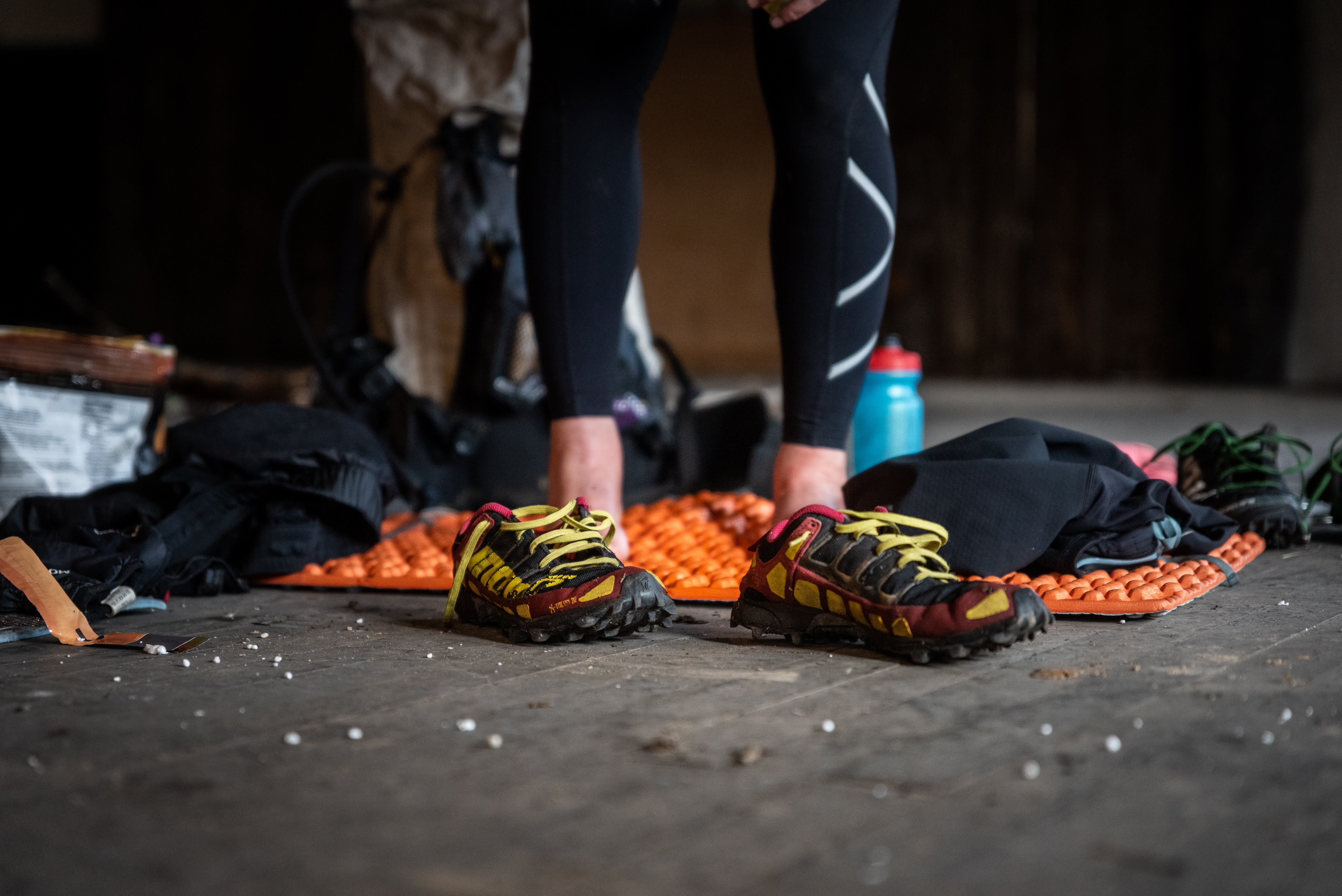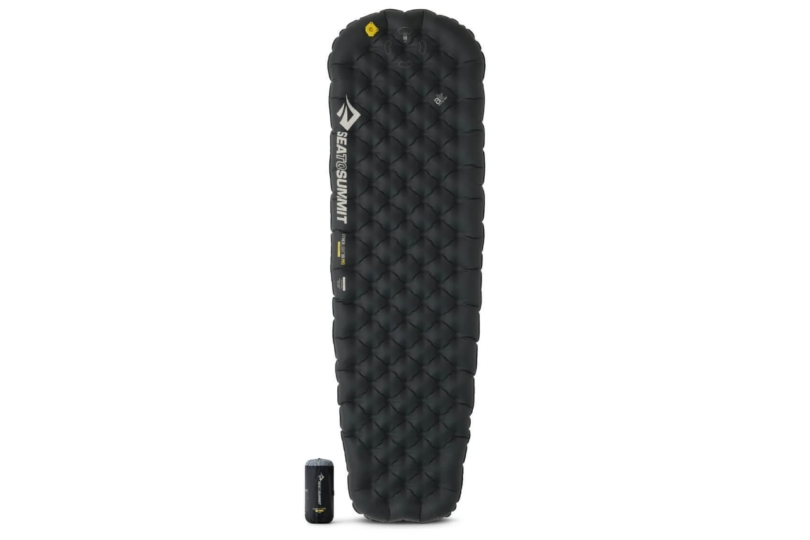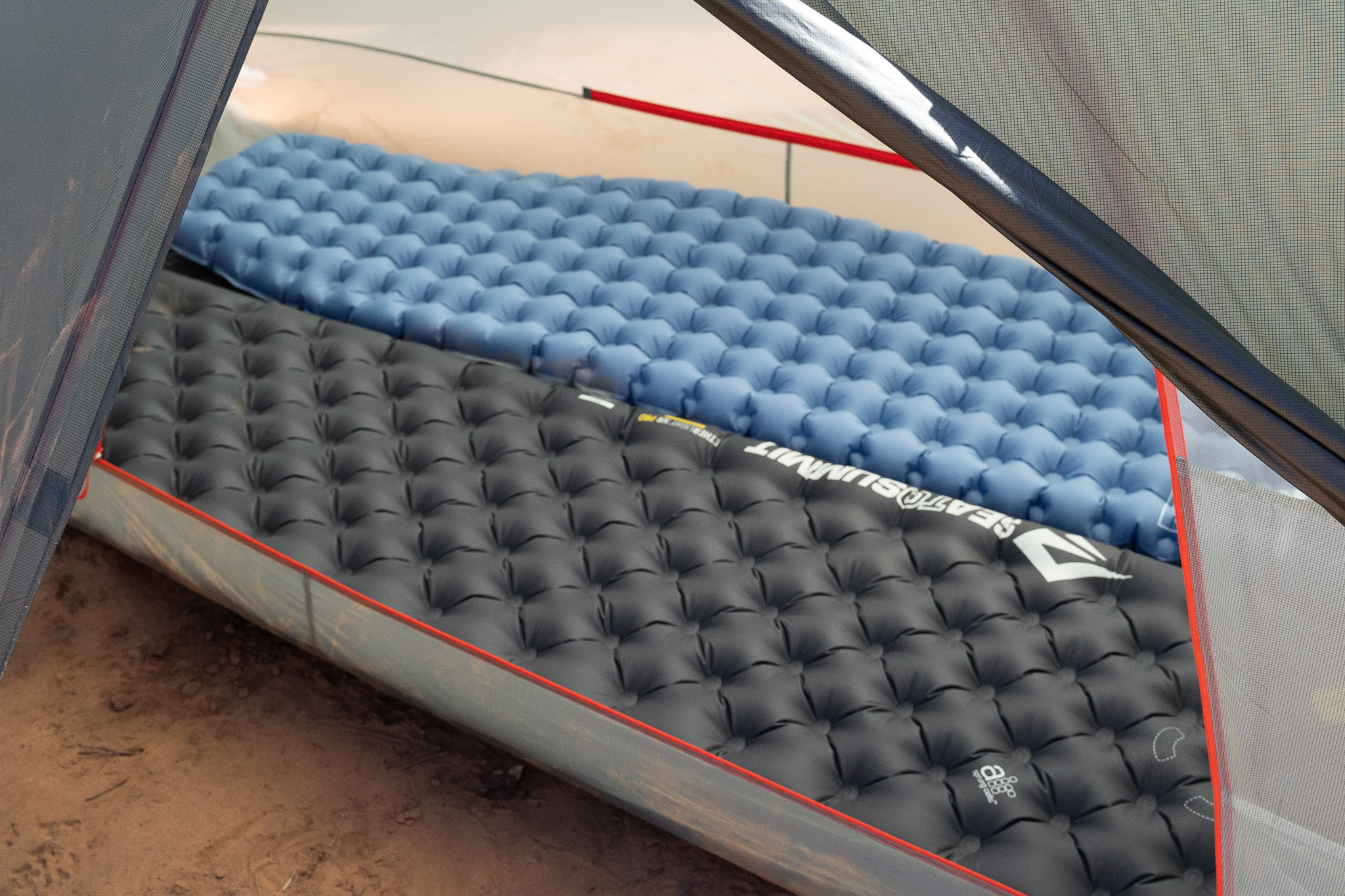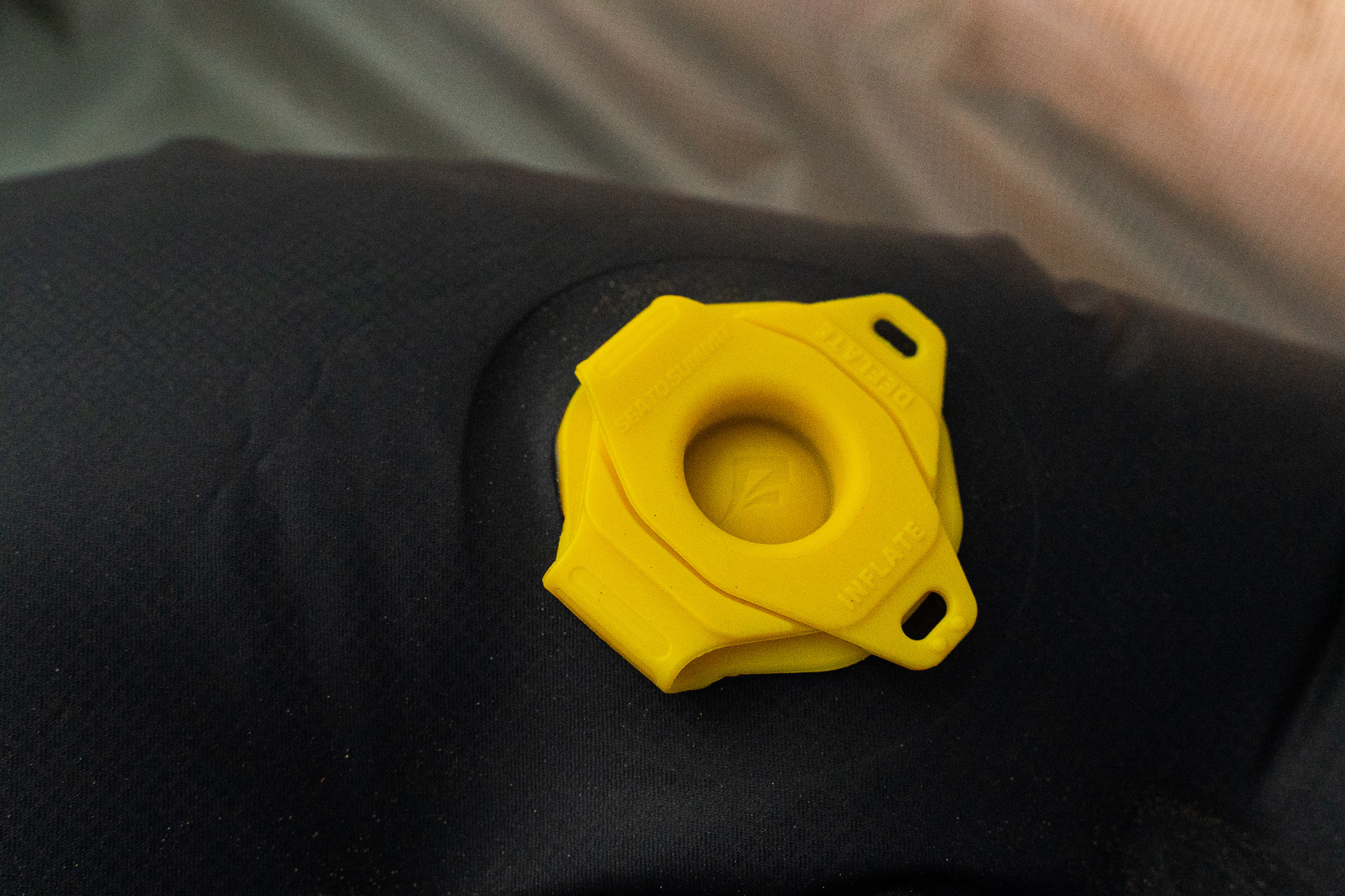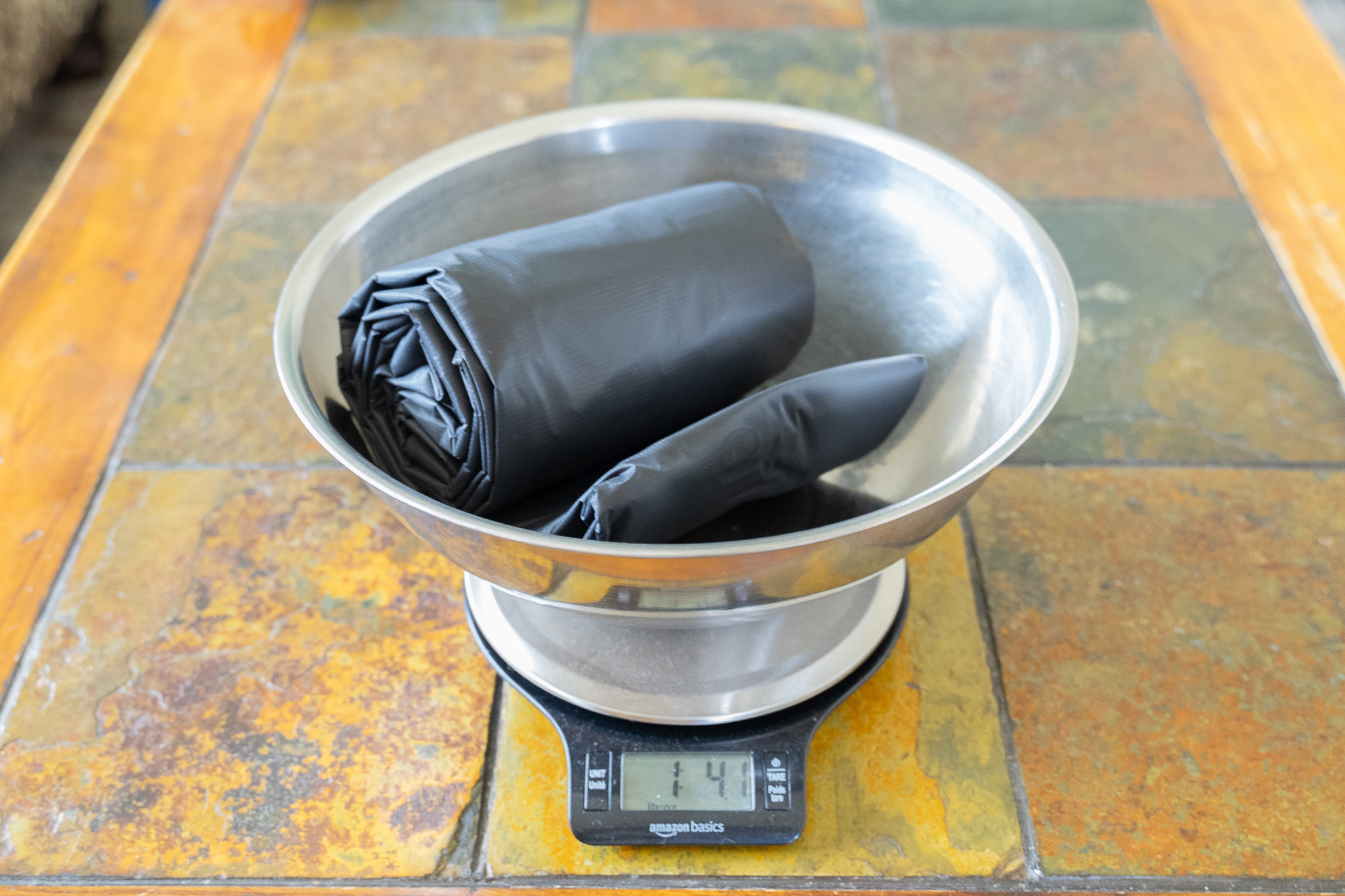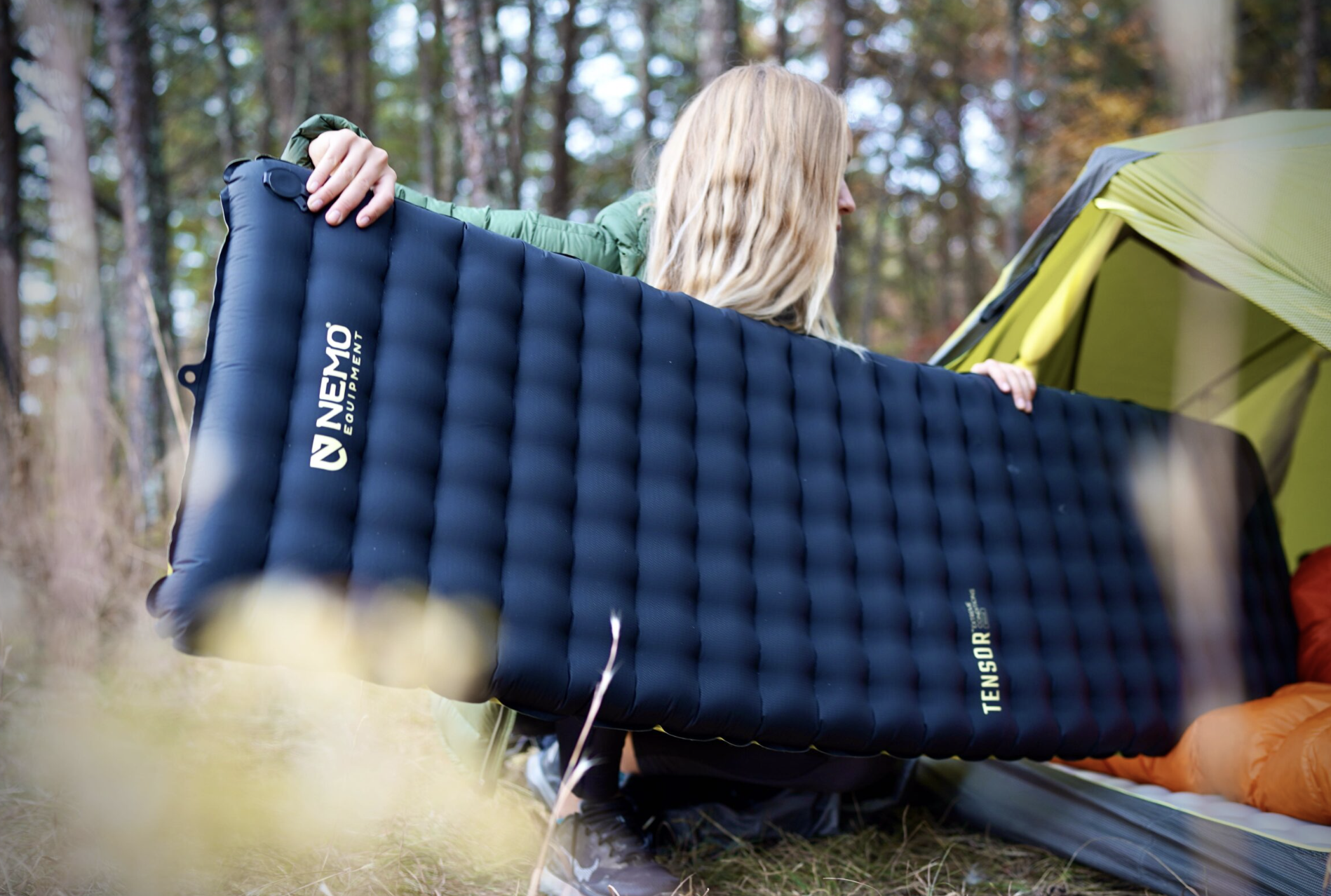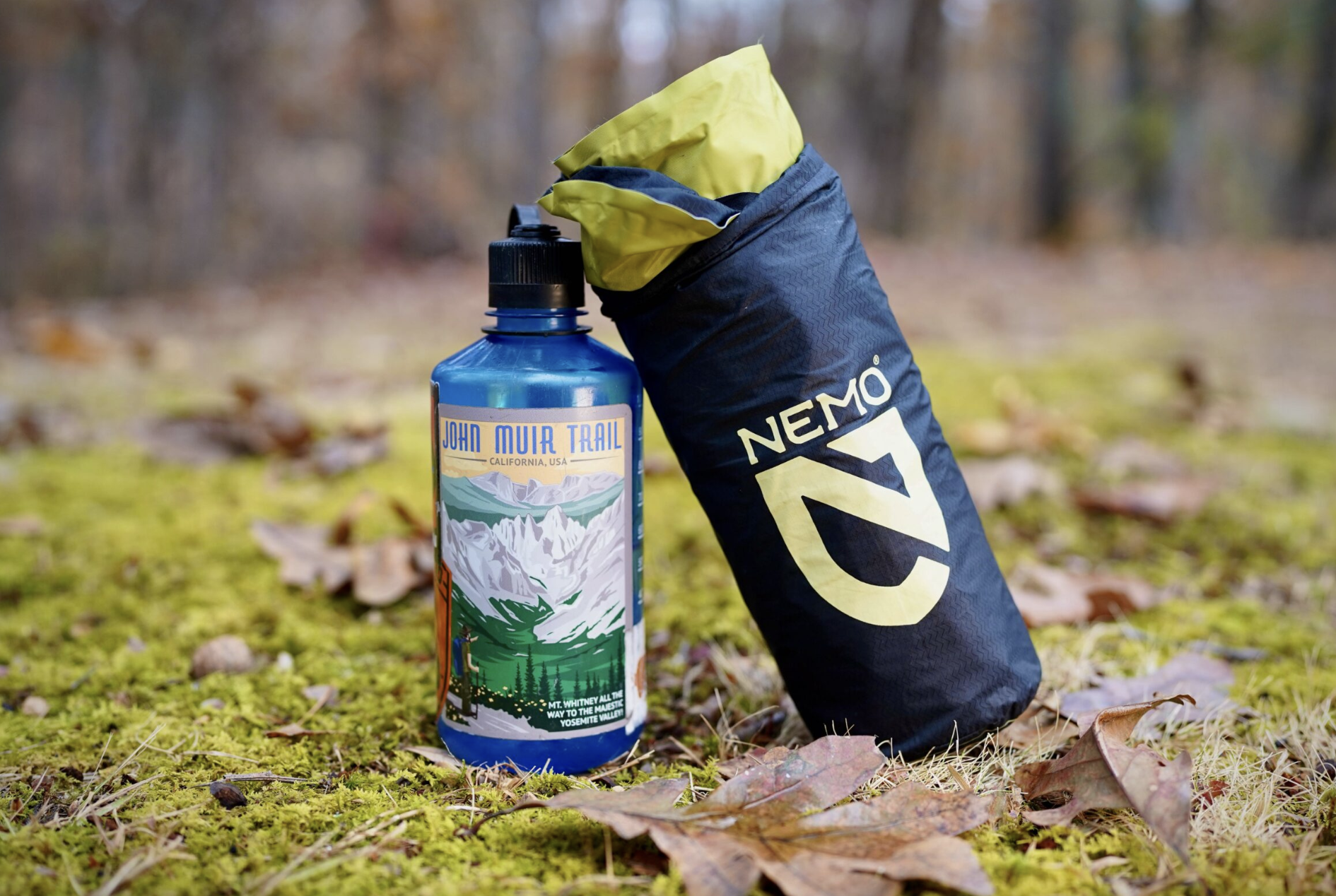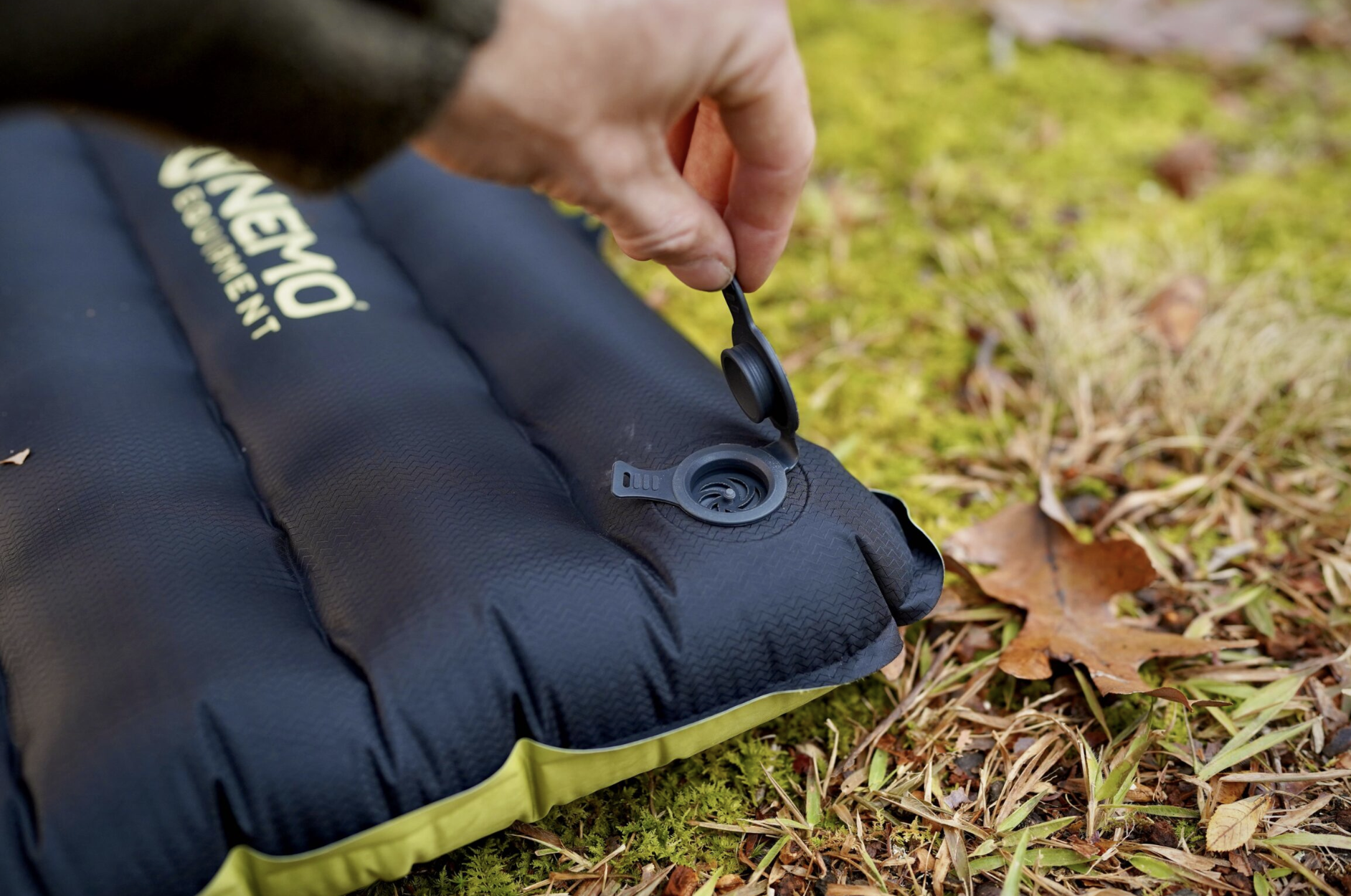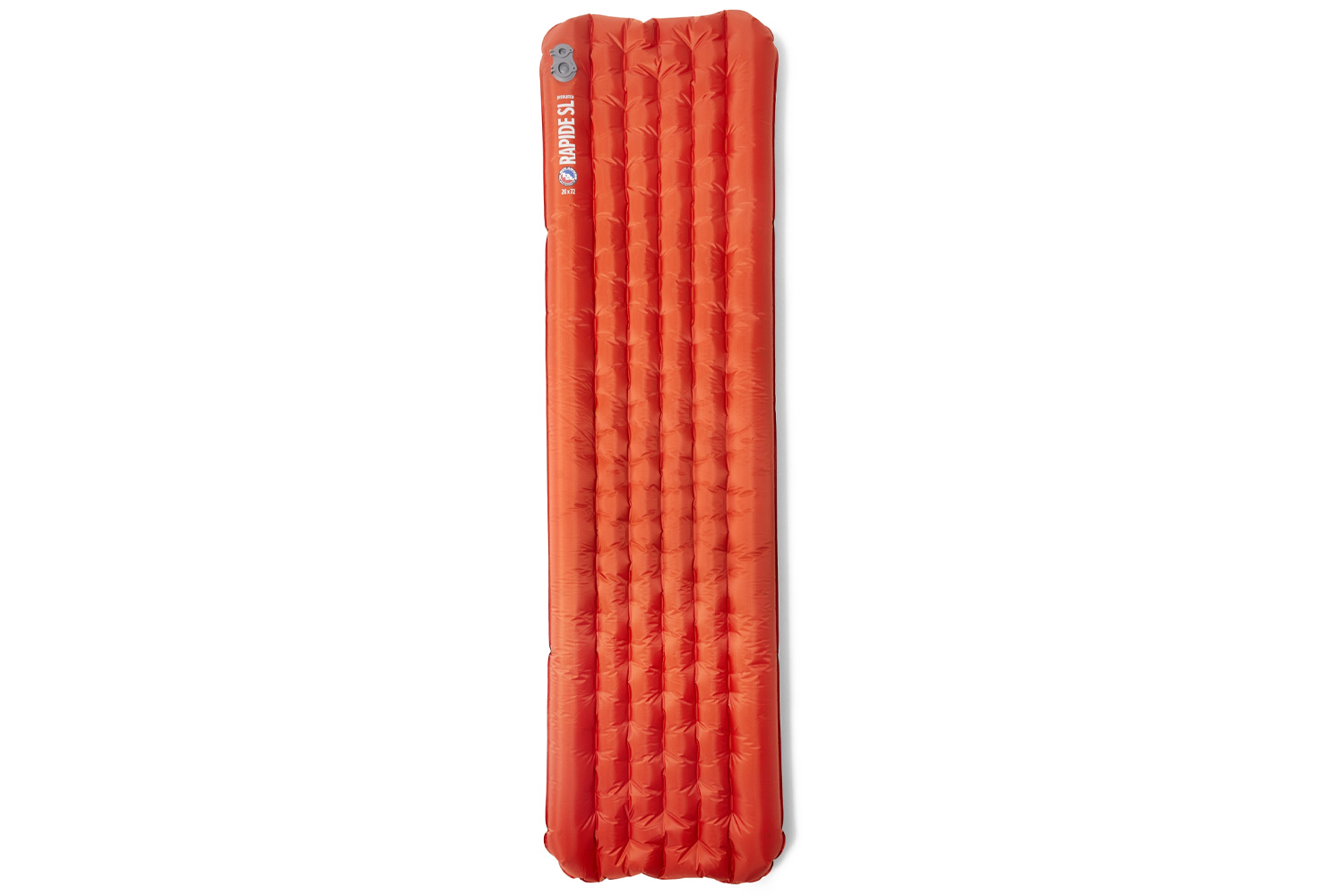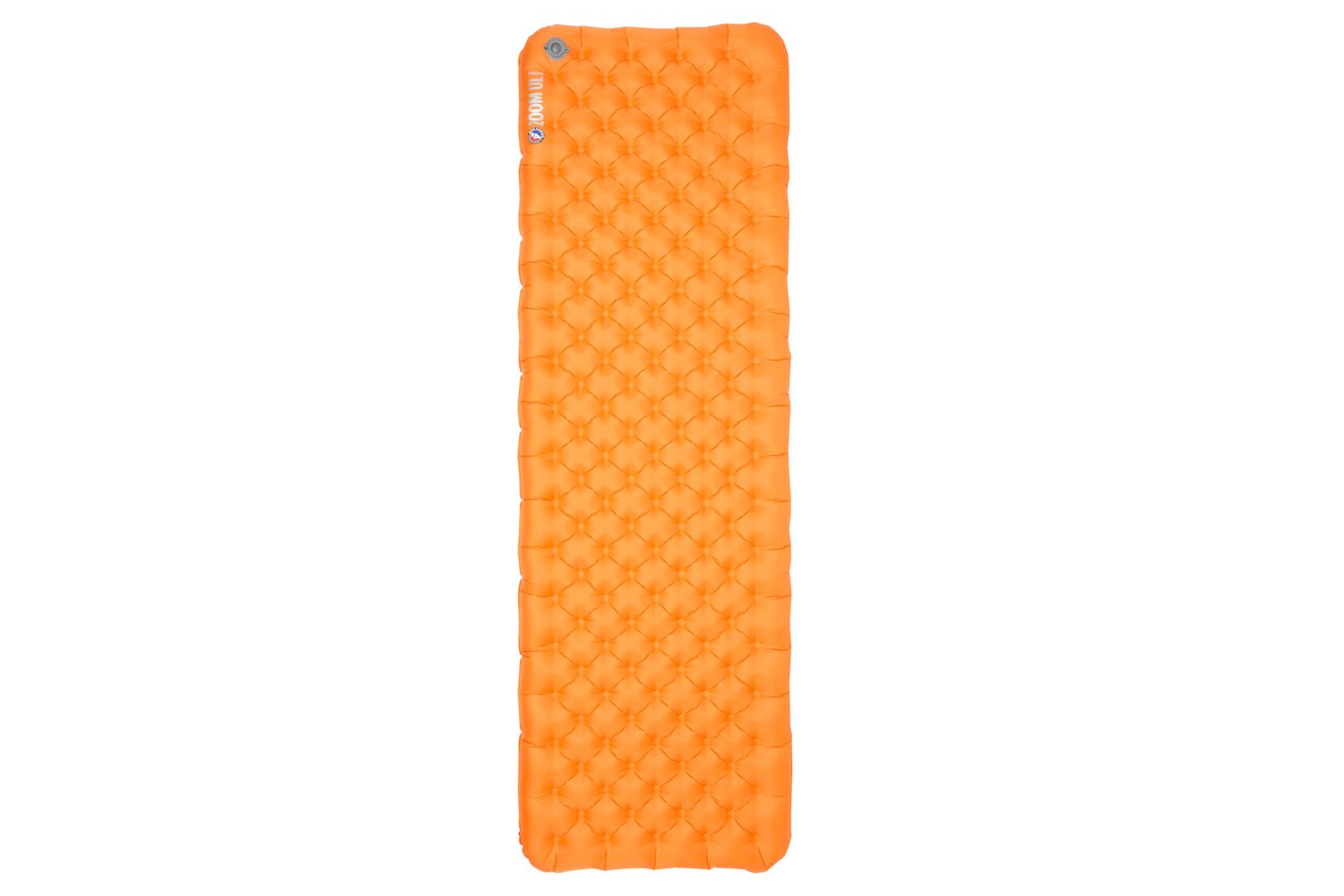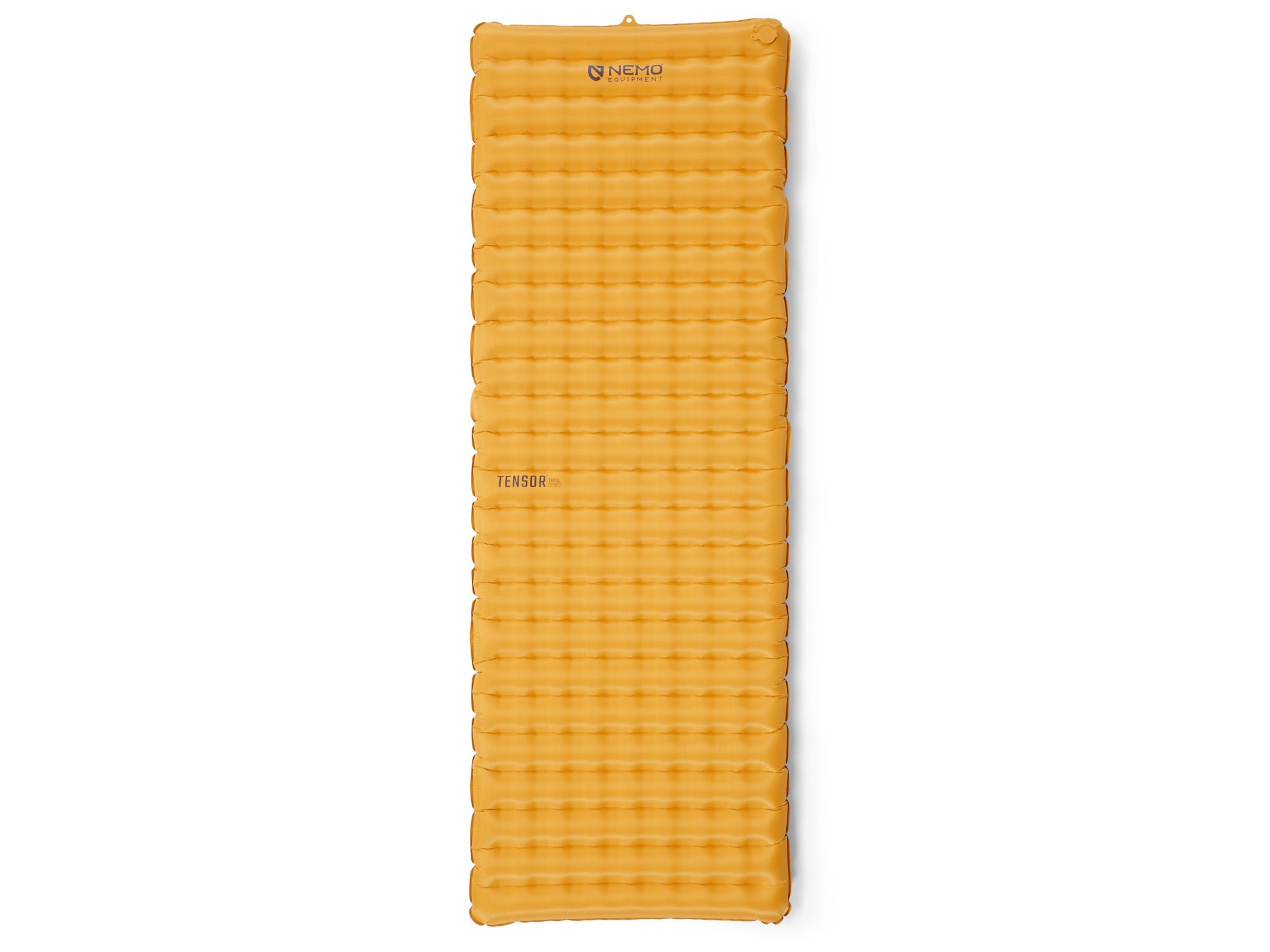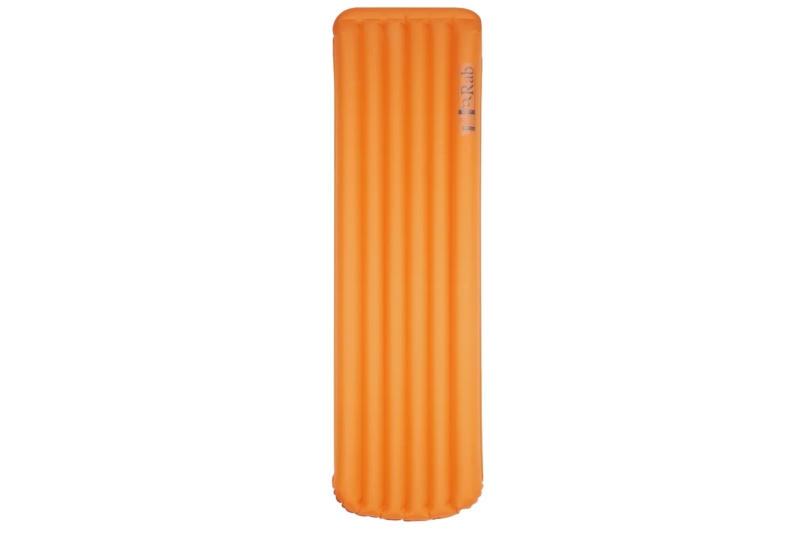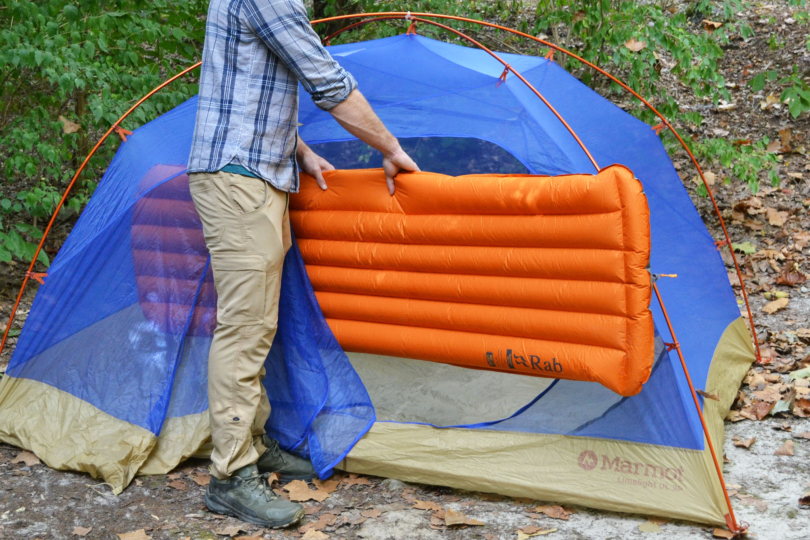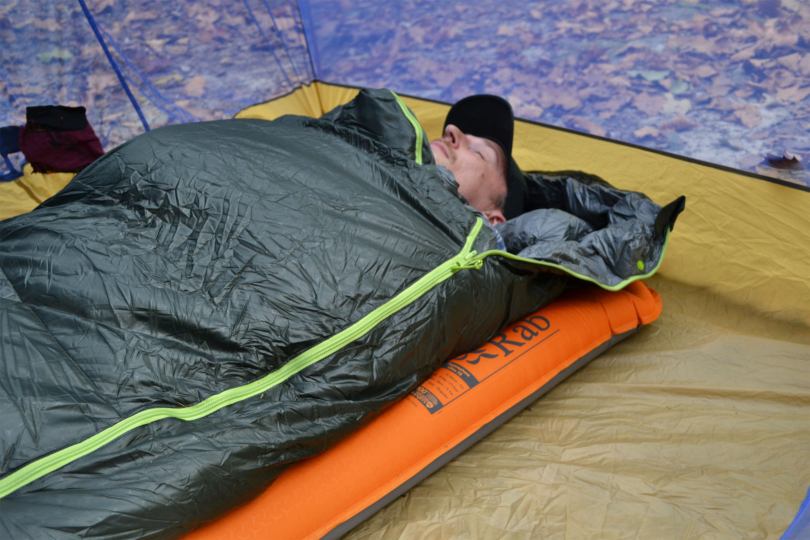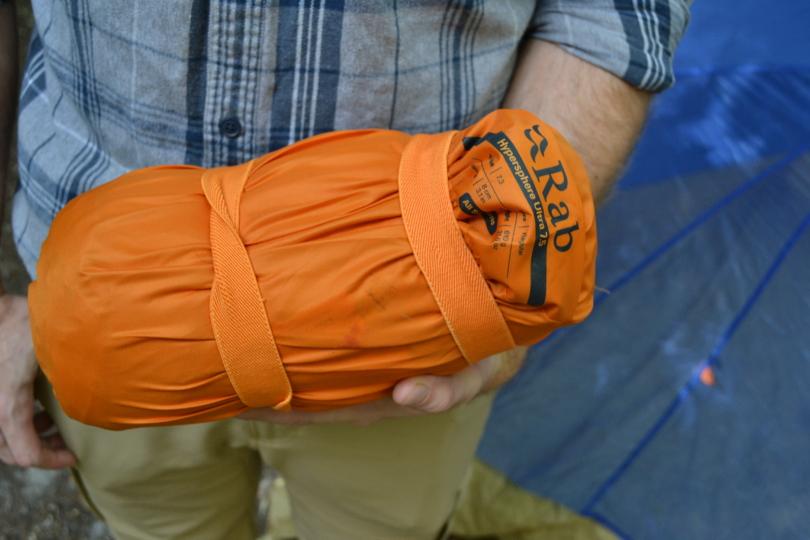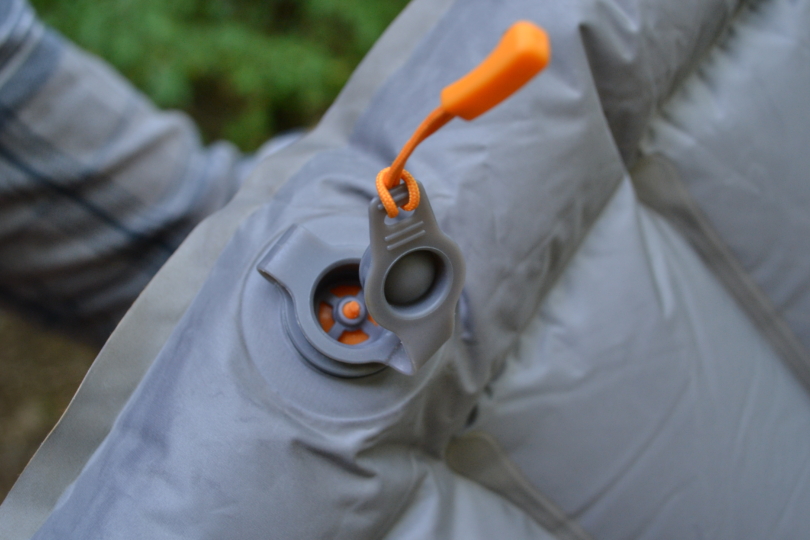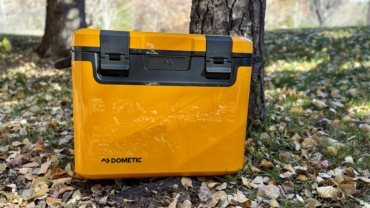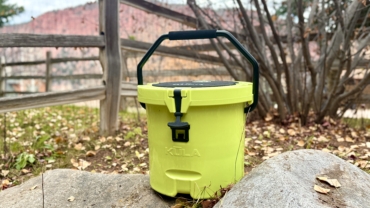Backcountry sleep comfort starts from the ground up, and the best backpacking sleeping pads ensure that your nights under the stars are restful, not restless.
Leveraging the collective experience of some of the best backwoods snoozers out there, we’ve pulled together the most solid options in 2025, along with our trail-worn opinions on each. Triple Crown thru-hiker Chris Carter has curated our list, and while testing each model, we focused on a number of key metrics.
To merit any real estate in this guide, every pad we blew up had to demonstrate outstanding durability, comfort, and insulation. We paid special attention to pack size, warmth-to-weight ratios, and ease of inflation. Rest assured — we would depend on anything in this roundup for our backcountry beauty sleep.
No stone was left unturned in an effort to narrow in on the most deserving pads for this guide. Right off the bat, the Therm-a-Rest NeoAir XLite NXT proved to be our favorite combination of warmth and packability, and the Klymit Static V emerged as a great budget compromise.
Editor’s Note: We updated our Backpacking Sleeping Pads guide on October 28, 2025, to add the Rab Hypersphere Ultra 7.5 — a unique option that utilizes goose down as an insulation for cold-weather use, as well as additional information on our testing processes.
The Best Backpacking Sleeping Pads of 2025
Therm-a-Rest NeoAir XLite NXT
-
Comfort
8.0
-
Warmth
8.0
-
Packed Size
9.0
-
Material Durability
8.0
- Weight: 13 oz.
- R-value: 4.5
- Thickness: 3″
- Lengths Available: Short (66"), Regular (72"), Large (77")
- Width: Regular (20"), Wide (25")
- Packed Size: 4.1" x 9" (regular)
- Shell Fabric: 30D ripstop HT nylon
- Insulation Type: ThermaCapture aluminized foil
Pros
- Super light for its high R-value
- Comfortable and sturdy
- Durable enough for 2,000+ mile thru-hikes
- Update is 6 times quieter than previous model
Cons
- Update adds 1 oz. (but is thicker and warmer)
- Still has some crinkle to it
Klymit Static V
-
Comfort
7.0
-
Warmth
6.0
-
Packed Size
7.0
-
Material Durability
6.0
- Weight: 1 lb., 2.6 oz.
- R-value: 1.3
- Thickness: 2.5"
- Lengths Available: Regular (72")
- Width: Regular (23")
- Packed Size: 3" x 8"
- Shell Fabric: 75D polyester
- Insulation Type: N/A
Pros
- Packs compactly
- Affordable price
- Inflates fairly quickly
- Quiet
Cons
- Not very thick
- Lacking insulation with a low R-value
- Long-term durability concerns
NEMO Tensor Elite Sleeping Pad
-
Comfort
8.0
-
Warmth
7.0
-
Packed Size
9.0
-
Material Durability
6.0
- Weight: 8.5 oz. (regular mummy), 8.3 oz. without the stuff sack
- R-value: 2.4
- Thickness: 3"
- Lengths Available: Regular mummy (72") and short mummy (63")
- Width: 20"
- Packed Size: 3" x 5.5"
- Shell Fabric: 10D Cordura nylon ripstop
- Insulation Type: Aluminized film
Pros
- The lightest inflatable sleeping pad available
- Impressive durability
- Comfortable 3-inch thickness
- Relatively quiet
- Effective included pump sack
Cons
- Slightly slippery face fabric
- 2.4 R-value limits four-season use
Therm-a-Rest NeoLoft Sleeping Pad
-
Comfort
9.0
-
Warmth
7.0
-
Packed Size
7.0
-
Material Durability
8.0
- Weight: 1 lb., 9 oz.
- R-value: 4.7
- Thickness: 4.6”
- Lengths Available: 73”
- Width: 22”
- Packed Size: 5.7” x 9.5”
- Shell Fabric: 50D poly knit (top), 75D poly knit (bottom)
- Insulated Type: ThermaCapture aluminized foil
Pros
- 4.6” of soft loft
- 4.7 R-value for year-round comfort
- Quiet
- Very soft and stretchy fabric
- TwinLock valves are easy to use
Cons
- Rolling off this sleeping pad hits different
- Heavier than most backpacking pads
Therm-a-Rest NeoAir XTherm NXT
-
Comfort
8.0
-
Warmth
9.0
-
Packed Size
8.0
-
Material Durability
8.0
- Weight: 15.5 oz.
- R-value: 7.3
- Thickness: 3″
- Lengths Available: Regular (72"), Large (77")
- Width: Regular (20"), Wide (25")
- Packed Size: 4.9" x 9"
- Shell Fabric: 30D nylon top, 70D nylon bottom
- Insulation Type: ThermaCapture aluminized film
Pros
- Impressive 7.3 R-value warmth
- WingLock valve is one of the best we've used
- Rugged 70D bottom textile
- Solid pump sack included
- MAX version is ideal for longterm basecamps in cold places
Cons
- Not the absolute warmest pad out there
- Still some crinkle noise while sleeping
Sea to Summit Pursuit Sleeping Pad
-
Comfort
7.0
-
Warmth
6.0
-
Packed Size
6.0
-
Durability
8.0
- Weight: 1 lb., 5.3 oz. (Regular mummy)
- R-Value: 3
- Thickness: 2"
- Lengths Available: Regular, Large
- Width: Regular, Wide
- Packed Size: 5.5" x 11.4"
- Shell Material: 20D recycled exterior fabric
- Insulation Type: Closed-cell foam
Pros
- Comfortable
- Quiet
- Self-inflating
- Durable
Cons
- Only self inflates to ~65-75%
- Doesn't pack away very small
- Is on heavy end for backpacking sleeping pads
NEMO Switchback
-
Comfort
6.0
-
Warmth
6.0
-
Packed Size
6.0
-
Material Durability
9.0
- Weight: 14.5 oz.
- R-value: 2.0
- Thickness: 0.9"
- Lengths Available: Regular (71"), Short (51")
- Width: 20"
- Packed Size: 5" x 5.5" x 20"
- Material: PE Foam
- Insulation Type: Thermal reflective film
Pros
- Dual-density foam offers plush comfort while still being supportive
- Taller nodes and smaller pack size than other models
- Indestructible
Cons
- Not as comfortable as inflatable pads
- Bulky pack size
Other Trail-Worthy Pads We Tested
While the following pads aren’t our editors’ absolute favorites, they’re all good options depending on your specific needs. If none of our award-winning picks pique your interest, check out these field-tested pads.
-
Comfort
9.0
-
Warmth
8.0
-
Packed Size
8.0
-
Material Durability
8.0
- Weight: 1 lb., 3.8 oz.
- R-value: 7.4
- Thickness: 3.9"
- Lengths Available: Regular (72")
- Width: 25.2"
- Packed Size: 5.3" x 9.4"
- Material: 30/40D nylon with TPU lamination
- Insulation Type: Multi-layer TRM reflective insulation
Pros
- Quick inflation
- Comfortable
- Quiet
- Tough (for a lightweight sleeping pad)
Cons
- Heavier compared to a few pads on our list with a similar R-value
-
Comfort
8.0
-
Warmth
9.0
-
Packed Size
8.0
-
Material Durability
8.0
- Weight: 1 lb., 1 oz. (Regular Mummy)
- R-value: 8.5
- Thickness: 3.5"
- Material: 20D and 40D GRS-certified & Bluesign-approved nylon
Pros
- Best warmth-to-weight ratio on the market
- Small pack size
- Durable construction despite light weight
- Quick inflation time
- Quiet
Cons
- Extremely difficult to fit into stuff sack
- Slippery material
- Not our favorite valve construction
-
Comfort
7.0
-
Warmth
7.0
-
Packed Size
7.0
-
Material Durability
8.0
- Weight: 1 lb., 2 oz. (regular)
- R-value: 4.8
- Thickness: 4.25"
- Lengths Available: Petite (66"), Regular (72"), Long (78')
- Width: Regular (20"), Wide (25")
- Packed Size: 4" x 7" (regular)
- Material: Nylon double ripstop
- Insulation Type: Aluminized film
Pros
- Comfortable
- Great warmth-to-weight ratio
- Compact and easy to carry
Cons
- Standard size is small
-
Comfort
8.0
-
Warmth
6.0
-
Packed Size
7.0
-
Material Durability
7.0
- Pad Type: Air
- Sleeping Area: 72" x 20" (Regular)
- Weight: 1 lb., 12 oz.
- Packed Size: 8" x 4.5" rolled
- R-value: 3.3
- Thickness: 3.5"
- Material: 30-denier polyester ripstop
Pros
- Excellent packed size
- Body-contoured pad baffles and elevated head
- Vortex pump sack works great
- Great option for side sleepers
Cons
- Finicky valve system
- Not quite as warm as comparable pads
-
Comfort
7.0
-
Warmth
7.0
-
Packed Size
8.0
-
Material Durability
7.0
- Weight: 14 oz.
- R-value: 4.3
- Thickness: 3.5"
- Lengths Available: Regular (70"), Long (78")
- Width: Regular (20"), Wide (25")
- Packed Size: 4" x 8"
- Shell Material: Nylon ripstop
- Insulation Type: Aluminized film
Pros
- Lightest weight pad in the Big Agnes lineup
- Ample protection from the cold in most conditions
Cons
- Single valve makes it hard to deflate the pad
- Slippery surface
-
Comfort
8.0
-
Warmth
6.0
-
Packed Size
7.0
-
Material Durability
7.0
- Weight: 13.9 oz.
- R-value: 2.8
- Thickness: 3"
- Lengths Available: Regular (72"), Long (76")
- Width: Regular (20"), Wide (25")
- Packed Size: 4" x 10"
- Shell Material: 20D nylon top, 40D nylon bottom
- Insulation Type: Thermal Mirror metallized film layers
Pros
- Very comfortable
- Remains quiet when rolling around
- Stable yet plush
Cons
- Not the warmest at 2.8 R-value
-
Comfort
7.0
-
Warmth
8.0
-
Packed Size
6.0
-
Material Durability
7.0
- Weight: 1 lb., 5.5 oz. (Regular)
- R-value: 7.3
- Thickness: 3"
- Lengths Available: Regular (72") and Long (77")
- Width: 20" and 25"
- Packed Size: 9.4 x 5.5"
- Material: 20D polyester
- Insulation Type: 6.7 oz. of 800 FP goose down
Pros
- Easy to pack away
- Comfortable on rocky surfaces
- Down-filled warmth
- Quiet with no internal reflective layers
Cons
- Heavier than other similar pads
- Weight: 1 lb., 6 oz.
- R-value: 3.3
- Thickness: 2"
- Lengths Available: Regular (72"), Long (76")
- Width: Regular (20"), Wide (25")
- Packed Size: 6.5" x 10"
- Shell Material: 100% recycled PU polyester, Bluesign approved
- Insulation Type: Open-cell foam
Pros
- Foam durability and padding
- Plus air pad comfort
- Self-inflating
Cons
- Heavier/bulkier than some other options
- Not super thick
Backpacking Sleeping Pad Comparison Chart
| Backpacking Sleeping Pad | Price | Weight | R-Value | Thickness | Material |
|---|---|---|---|---|---|
| Therm-a-Rest NeoAir XLite NXT | $200-240 | 13 oz. | 4.5 | 3″ | 30D ripstop HT nylon |
| Klymit Static V | $65 | 1 lb., 2.6 oz. | 1.3 | 2.5″ | Polyester |
| NEMO Tensor Elite | $230 | 8.3 oz. | 2.4 | 3″ | 10D Cordura nylon ripstop |
| Therm-a-Rest NeoLoft | $240 | 1 lb., 9 oz. | 4.7 | 4.6″ | 50d poly knit (top), 75d poly knit (bottom) |
| Therm-a-Rest NeoAir XTherm NXT | $240 | 15.5 oz. | 7.3 | 3″ | 30D nylon top, 70D nylon bottom |
| Sea to Summit Pursuit | $149 | 1 lb., 5.3 oz. | 3 | 2″ | 20D recycled exterior fabric, closed-cell foam |
| NEMO Switchback | $50-60 | 14.5 oz. | 2 | 0.9″ | PE foam |
| Sea To Summit Ether Lite XR Pro | $229 | 1 lb., 3.8 oz. | 7.4 | 3.9” | 30/40D nylon with TPU lamination, multi-layer TRM reflective insulation |
| NEMO Tensor Extreme Conditions | $250 | 1 lb., 1 oz. | 8.5 | 3.5″ | 20D and 40D GRS-certified & Bluesign-approved nylon |
| Big Agnes Rapide SL | $159 | 1 lb., 2 oz. | 4.8 | 4.25″ | Superlight nylon double ripstop |
| NEMO Quasar 3D Insulated | $160 | 1 lb., 12 oz. | 3.3 | 3.5″ | 30D polyester ripstop |
| Big Agnes Zoom UL | $179 | 14 oz. | 4.3 | 3.5″ | Nylon |
| NEMO Tensor Trail | $180 | 13.9 oz. | 2.8 | 3″ | 100% PCR PU polyester, Bluesign certified |
| Rab Hypersphere Ultra 7.5 | $250 | 1 lb., 5.5 oz. | 7.3 | 3″ | 20D polyester |
| NEMO Flyer | $140-160 | 1 lb., 6 oz. | 3.3 | 2″ | 100% recycled PU polyester, Bluesign approved |

How We Tested the Best Backpacking Sleeping Pads
At GearJunkie, we use a combination of season-long field testing and in-house bench comparisons to get the full picture on these sleeping pads before recommending them to you.
- Field testing: Time in the backcountry is premium in our testing, and we weigh it the heaviest in our considerations. We aim to use these pads for a full season before a verdict.
- Relative warmth testing: We don’t have fancy R-value testing equipment, but we do have a few temperature data loggers that we use to rate pads comparatively night to night.
- Packed and in-use size measurement: Space is at a premium when backpacking, and we measure critical dimensions on these pads to compare them side to side, such as cushion height, packed size, and sleeping space.
- Durability monitoring: Across all of our testing, we look for leaking valves, pinholes, and even burst baffles (we’ve seen it happen before).
- Our sleeping pad rating system:
- Comfort: 30% weighted. When considering air pads, we look for at least 3″ of cushion to rate highly, with that number dropping to 2″ for self-inflating pads. Foam pads, generally, don’t rate very highly in this attribute.
- Warmth: 30% weighted. For summer use, we look for an R-value of at least 3 to rate highly, with a value of at least 5 being required for winter camping.
- Packed Size: 20% weighted. Generally, the smaller a pad packs, the higher the rating we assign. Often the most ultralight pads will rate highly here, but trade some performance in comfort and durability for it.
- Durability: 20% weighted. Before rating these pads, we consider their season-long durability. We look for material damage to the shell, the operation of the valves, and the durability of any stuff sacks.
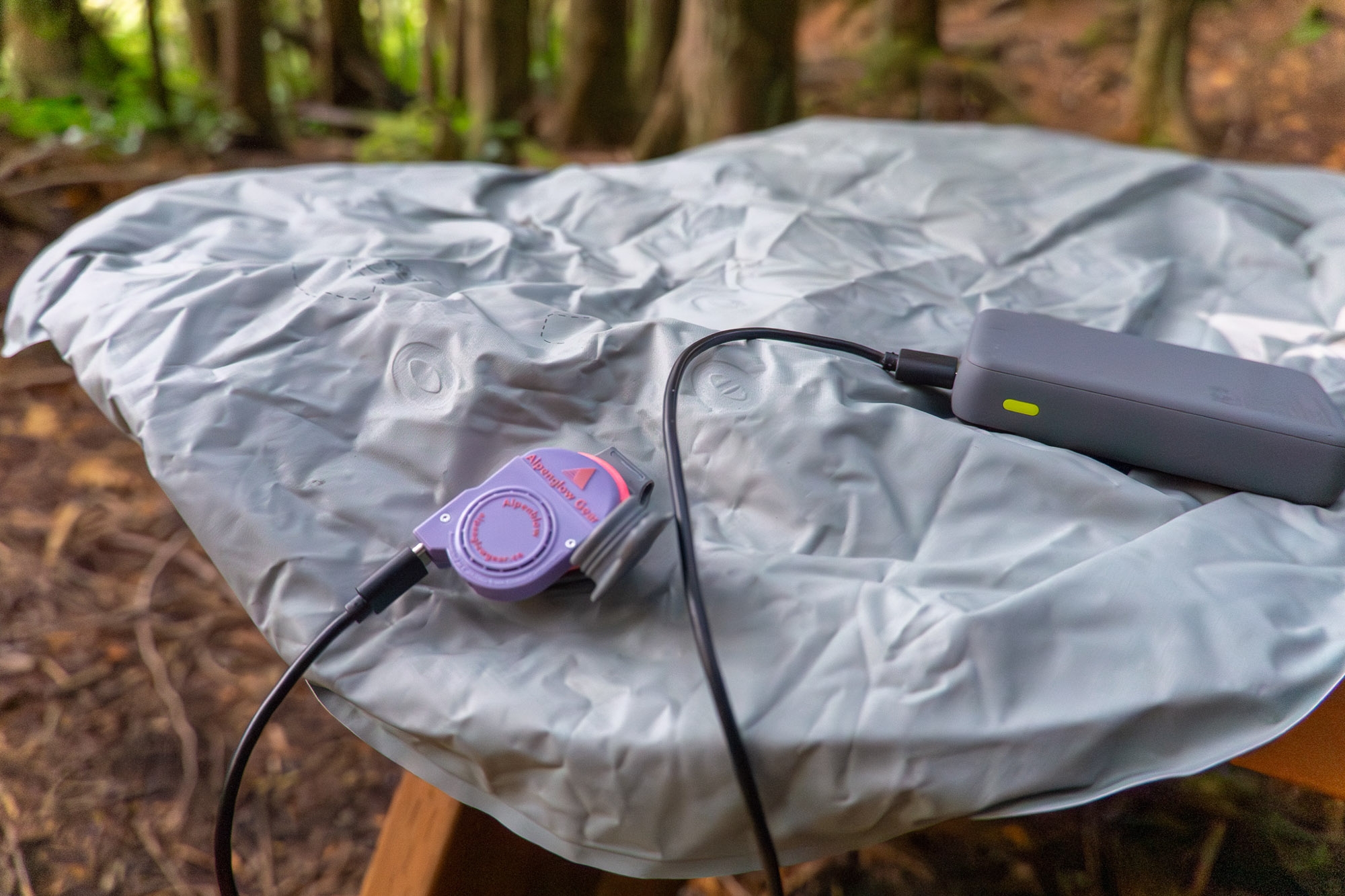
Our Expert Testers
The GearJunkie team is made up of avid backpackers, from weekend warriors to fast and light thru-hikers. We’ve spent hundreds of hours blowing air into sleeping pad nozzles and repeatedly experienced the sadness of a mysterious midnight deflation.
Contributors Mallory Paige and Austin Beck-Doss led the charge in the creation of this guide back in May 2021, accruing our initial selection of 10 sleeping pads. Seasoned pros in the backpacking realm, both authors have paid their dues on rough backcountry trails, and are intimately familiar with the necessity of sound sleep on any demanding adventure.
Senior Editor Chris Carter now leads testing on this guide and has significant experience sleeping atop various inflatables, having thru-hiked the Pacific Crest Trail, the Continental Divide Trail, and the Appalachian Trail. He knows the importance of consistent Zs on trail and is meticulously choosy about the portable beds he picks for the wild.
Our Testing Process and Testing Grounds
Our primary considerations while testing are packed size, comfort, warmth, and ease of use. When backpacking, the ratio between weight and comfort is all-important, so we paid extra attention when examining these two specs.
Secondly, we looked at durability and value. These pads were carefully inspected and repeatedly slept on inside tents and directly under the stars. If you are mainly car camping and aren’t concerned about weight, we focus our critical eye on comfort-focused pads in our guide to the best camping mattresses.
Testing in the field gives us a great big-picture view of how each pad feels and performs as we unpack, inflate, sleep, deflate, and pack them back up again. But taking these pads inside, weighing them, counting breaths to inflate, and comparing them side by side is what helps us distinguish the best of the best.

Buyer’s Guide: The Best Backpacking Sleeping Pads
A restful night’s sleep sets you up for success on a full day of backpacking adventures. In the past, people rightfully assumed sleeping on a pad on the ground could never match the comfort of a real bed.
However, sleeping pads have improved significantly in recent years. With advancements in cell design and baffling, many high-quality sleeping pads offer exceptional warmth and comfort.
While comfort standards have increased, packed size and weight have also dropped, and the resulting pads are light, easy to use, and wonderful to sleep on.
Because there are so many great pads on the market, it can be difficult to make a selection. In this guide, we break down some of the most important considerations for purchasing the perfect sleeping pad.
In this buyer’s guide, we hope to answer all of your sleeping pad-related questions, from weight and thickness to durability and price.
Types of Sleeping Pads: Foam, Self-Inflating, and Air Pads

There are three types of backpacking sleeping pads: air pads, foam pads, and self-inflating pads. Each category has its own list of pros and cons, and it’s important to understand the differences between them.
Air Pads
Air pads are the lightest and most compact type of sleeping pad. When not in use, they can be deflated and packed into a small stuff sack about the size of a water bottle. Because most of their insulation is trapped in air, they can become quite thick without excess weight or bulk.
Compared to other categories, air pads are the most vulnerable to punctures and air valve issues. Punctures are usually fixable with the proper supplies, but some people avoid air pads due to the puncture risk.
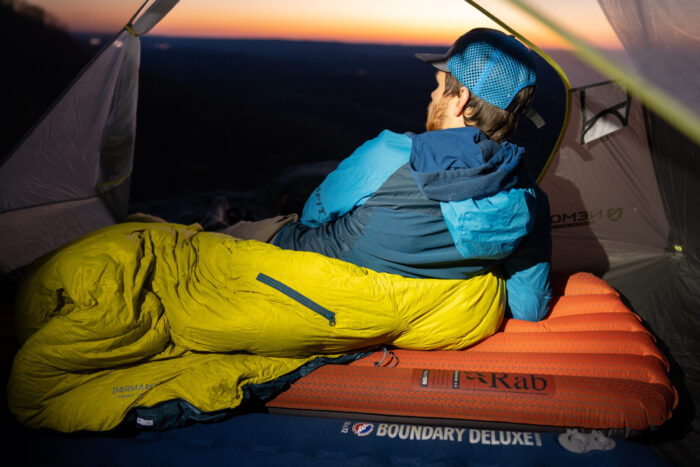
Most pads come with repair kits for punctures or tears, but our testers have had good luck with trusty Tenacious Tape in a pinch or even super glue for fixing issues around the valve.
Self-Inflating Pads
Self-inflating pads have been around for many decades. Most pads in this category combine inflation with open-cell foam to decrease puncture risk and increase durability.
However, self-inflating pads do not pack down as small as air pads, and they tend to be a bit heavier. If these pads do puncture or deflate, you’ll still have some padding between you and the ground, but it won’t be a super comfortable night’s sleep.
Foam Pads

Closed-cell foam pads are the original backpacking sleep system technology. Although these tend to be the least comfortable pad style, they are extremely reliable and can last for decades if treated with care.
On a foam pad, you can sleep soundly without worrying about punctures. Usually, foam pads fold or roll to pack away, but they take up far more space in your pack than other types of pads and often have to be strapped to the outside.
Weight
The goal of backpacking is always to minimize the total weight of your pack, particularly when hiking with ultralight backpacks. These days, thick and comfortable pads that are also lightweight offer an ideal solution for backpackers.
Some single-person pads can weigh as little as half a pound, while heftier options may weigh 2 pounds. For a good balance between weight and durability, consider a pad that weighs 14-18 ounces.
Truly ultralight fiends will often carry a torso-length pad, and use their backpack or foam back panel as the insulation for their legs. This greatly cuts base weight but can be a gamble in chilly conditions. Figure out your threshold of comfort, and dial in on a comfort-to-weight ratio that allows you to cruise the miles with ease while getting a full night’s rest when the sun goes down.
Thickness
On uneven or rocky ground, a thin pad will feel only slightly better than lying on the bare earth. As a general rule, thicker pads are more comfortable. However, thickness does add weight and bulk, so we suggest you aim to find a happy medium.
If you are a back sleeper, your weight will be a bit more evenly distributed, and you may be able to get by with a thinner pad. Side sleepers tend to prefer thicker pads, such as the Therm-a-Rest Neoloft.
Any inflatable pad over 3.5 inches thick will be on the more plush side, whereas most foam pads are less than 1 inch thick.
Comfort
Generally, pads made for backpacking will be less plush than pads made for car-based camping. Because backpackers aim to minimize weight, pure comfort is not the priority.
Still, many modern pads offer a generous combination of insulation, padding, and sleeping area all in a lightweight package. For some backpackers, a bit of extra weight is a small price to pay for added comfort.
While stack height isn’t the only determining factor in how comfortable a pad is, it plays a large role. The pads on this list range from under 1 inch to 4 inches thick. Thicker pads obviously land on the heavier, bulkier fringe of the spectrum, but offer plush comfort compared to thinner pads, which bottom out easily. This is particularly true if you are a chronic side sleeper.
R-Value Explained
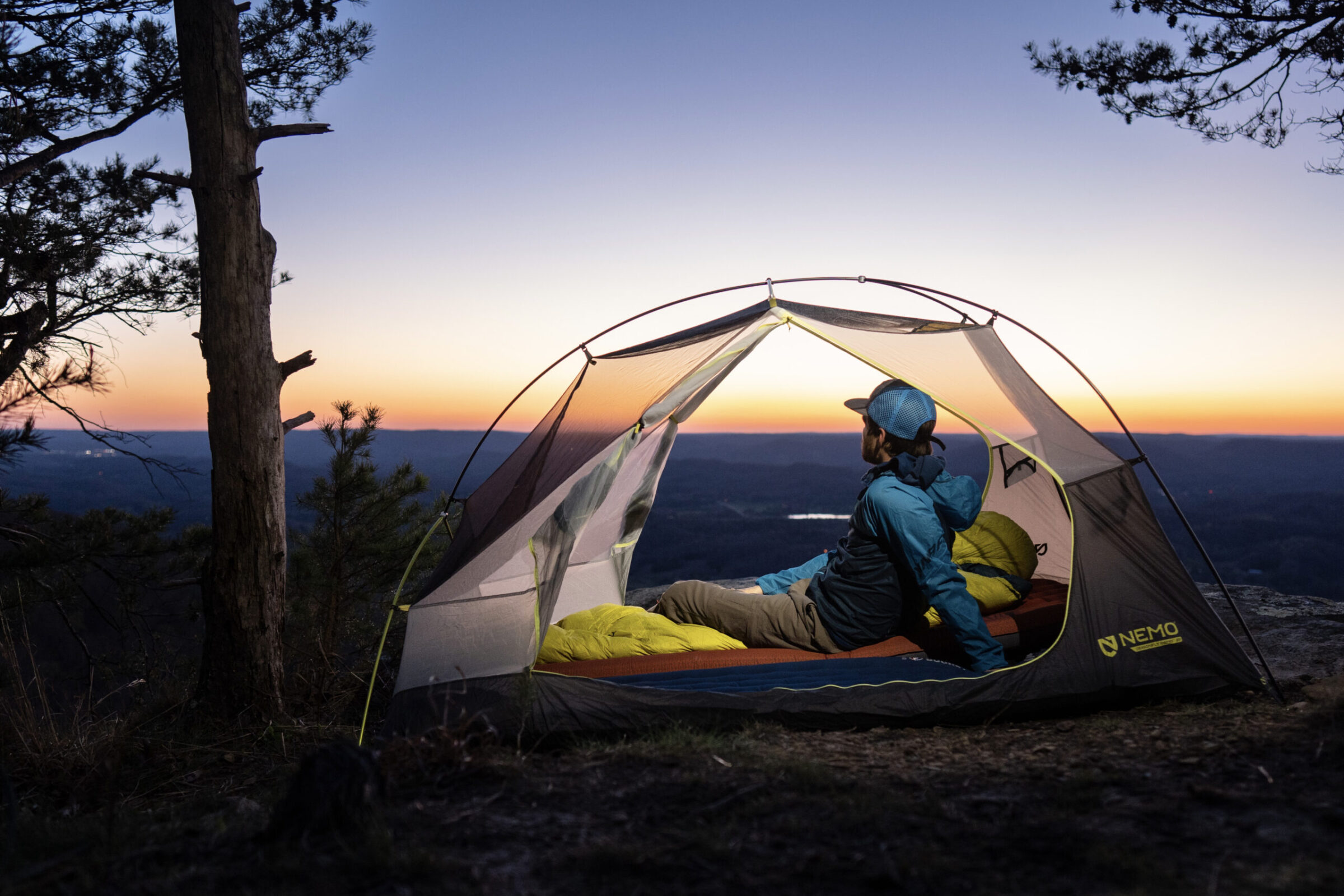
The R-value of a pad describes the amount of insulation between the user and the ground. Insulation prevents your body heat from escaping into the earth below. Without a well-insulated pad, sleeping on the ground is very chilly, even when the air temperature is reasonably warm.
In warmer conditions, a sleeping pad with an R-value of less than 3 should be sufficient. However, if you plan to backpack in the shoulder seasons, you’ll be better off with a higher rating (between 3 and 5). For winter camping or mountaineering, an R-value of at least 5 (like the Exped Ultra 7R at 7.1) is the way to go.
Higher R-values are attained in various ways depending on the design, but they generally involve suspending various layers of reflective film within the pad on vertical “trusses” (flexible supports within the pad). These sheets reflect body heat back at the user and guard against radiant heat loss — all while deflecting cold seeping in from the ground.
As insulation technology develops, manufacturers are able to attain better and better warmth-to-weight ratios and dial in on impressively high R-values while keeping weight to a minimum. NEMO’s new Tensor Extreme Conditions is a prime example of this.
Boasting an absurdly high 8.5 R-value, it has a modest minimum trail weight of 17 ounces. Similarly, the Exped Dura 8R has a high R-value of 7.8. Models like these allow backpackers to maintain an ultralight loadout while adventuring in truly arctic conditions.
While most backpackers won’t need such high R-values for their backpacking trips, it can be nice to have for the occasional winter excursion, or stretches of chilly, high-altitude trail on longer journeys like thru-hikes.
Sleeping Pad Dimensions
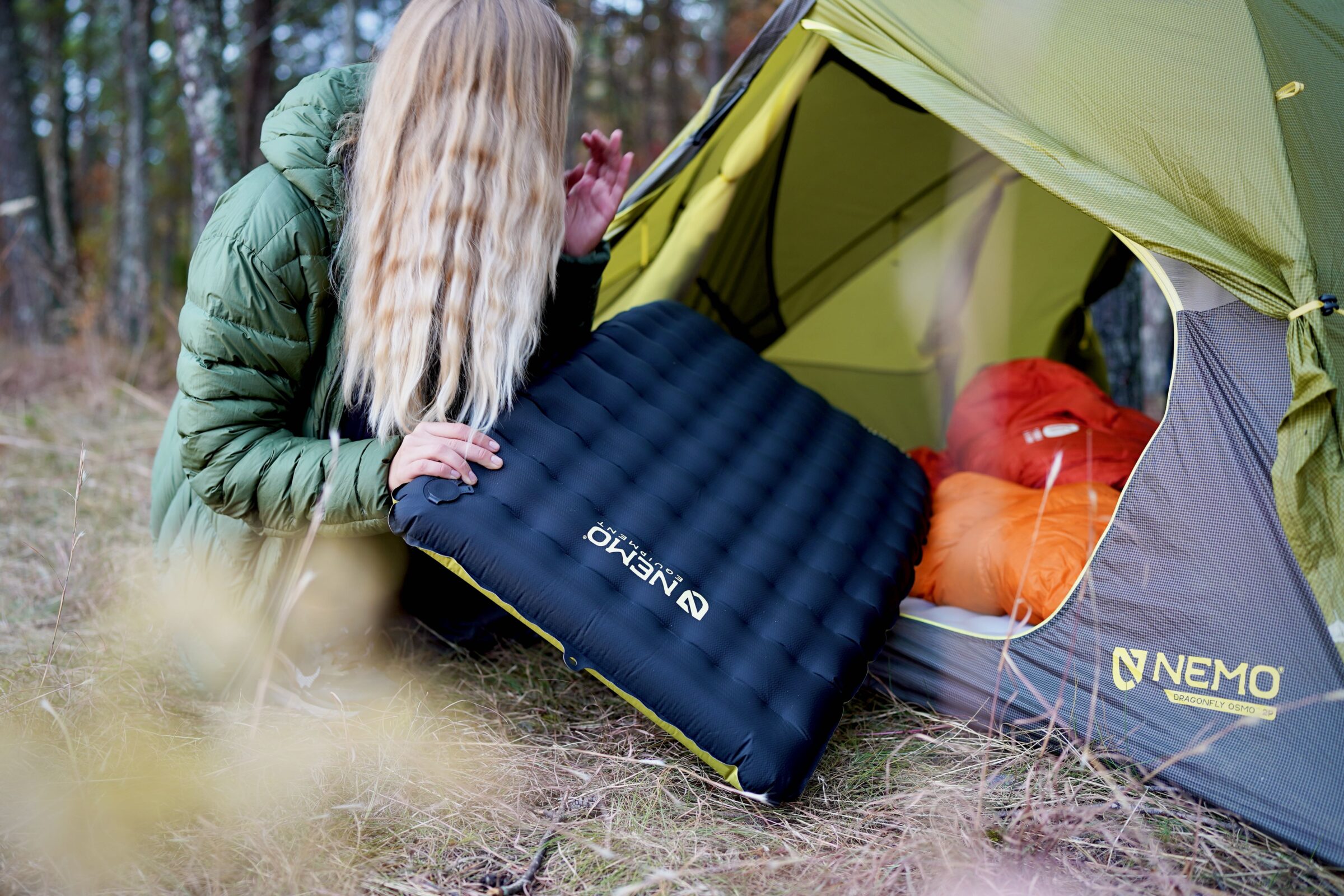
Sleeping pads typically come in various sizes, and users can choose the option that best suits their body and preferences. Common sizes include regular, which is usually around 6 feet long, and large, which tends to be closer to 80 inches. Pad width also varies, but anywhere between 18 and 26 inches is fairly standard.
When deciding on the best width for your needs, consider how voluminous your sleeping bag is, and if you tend to wear bulky cold-weather clothes while sleeping. Trying to balance on a narrow pad while bundled up in a bulky cocoon can result in a poor night of rest.
Most backpacking pads are semi-rectangular in shape, and some taper down and become more narrow toward the feet. Two-person sleeping pads are also available, but they’re quite cumbersome and generally not ideal for backpacking.
If you are consistently hiking with a partner, however, they can be a feasible, streamlined option, if one partner carries most of the weight of your two-person tent, and the other carries the two-person pad. Whatever pad you decide to go with, make sure it fits comfortably inside your backpacking tent.
Packed Size
A pad’s packed size depends on construction, materials, and the amount of insulation. Air pads with minimal additional built-in insulation tend to pack down smaller than all other types of pads. Most air pads fit easily into a backpacking pack — some are no larger than a football.
Packed size can be an issue for foam and self-inflating pads. Once fully rolled, these pads can be quite cumbersome, and they often have to be carried on the outside of your backpacking backpack.
Inflation and Deflation
While foam pads do not require inflation to use, all other pad types are built with an integrated air valve. Historically, valves have been the weak point of sleeping pads, and they can be difficult to replace once broken.
But now, high-quality backpacking pads come with reliable valves that are airtight and offer quick and easy inflation and deflation.
Most air pads have flat valves, which include an internal flap that prevents air from escaping in between inflation breaths. These valves are simple and durable, and most pads with flat valves can be inflated with somewhere between 10 and 25 breaths.
These types of valves will also often include the ability to make micro-adjustments to the amount of air in your pad, even while fully weighted. This can be nice if you decide you want a bit of a cushier feel mid-sleep.
Self-inflating pads are designed to fill up on their own once the valve is open, but they usually need some regular inflation breaths to fully pump up and become firm.

Durability
With proper maintenance, a good backpacking pad can last for many years with regular use. Foam pads can take lots of abuse and last forever, but inflatable pads are fragile and must be handled with care.
Punctures are the main threat to air pads. As with all outdoor gear, abrasion resistance, and fabric thickness are measured with a denier rating. Thick fabric is more resistant to punctures. Air pad denier ratings vary widely, from around 15-denier to 80-denier.
As a rule, always clear away any potentially sharp objects from underneath your sleeping surface before setting up your tent. When sleeping on your pad, the use of a tent footprint creates an extra barrier between your pad and the ground. It’s also wise to keep your pad away from fires that may spit sparks and bits of hot ash.
As the standard has moved toward lightweight backpacking pads, many companies are using thin and potentially vulnerable materials. As with all ultralight gear, durability is not the priority. The lifespan of a lightweight pad will depend on how well it is cared for, and the precautions you take when setting up camp.

Caring For and Storing Sleeping Pads
Best practices for storing a pad depend on the type of pad you own. Self-inflating pads should be stored unrolled with the valve open to maintain the loft of the insulation. Air pads can be stored rolled up, but always keep them in a stuff sack and make sure they are fully deflated.
For foam pad storage, avoid leaving heavy items on top of the pad. Also, if you store a foam pad rolled up, it may be difficult to get it to lay flat in the future, though the z-pad design prevents this.
While you are rolling your pad up in the morning, make sure to wipe any leaves, twigs, or dirt off your pad. Storing a tightly rolled pad with debris in it could cause small abrasions in the face fabric, and even holes in extreme cases, as the pad jostles around inside your backpack or car.
Also, using a pump sack to inflate your pad will help prolong its life, by reducing the amount of moisture buildup in the pad from your breath. If you can, try and use the often included pump sack to inflate your pad each night instead of your mouth.

Pump Sacks: Do They Work?
Some air pads come with pump sacks that allow you to pump up your pad without breathing into a valve. Pump sacks decrease inflation time and prevent breath moisture from getting inside your pad (which can lead to a variety of problems). It also helps you avoid getting light-headed by having to blow it up with your mouth after a long hot day in the sun.
Also, many pump sacks double as stuff sacks, and they generally don’t add much weight to your setup. Some of our testers like to fill them with spare clothes and use them as makeshift pillows.
Pump sacks come in all different shapes and sizes, and some are better than others. During testing, we found the sacks that come with the Sea to Summit Ether Light and NEMO Tensor Extreme Conditions to be the most efficient, easiest-to-use models for swiftly inflating your pad.
However, many backpackers feel pump sacks have solved a problem that didn’t exist in the first place. While some people swear by them, they are not a necessary item in most instances. You can prolong the life of your pad by using a pump sack, though, particularly with pads like the Exped Ultra 7R and the Dura 8R, which have a down filling that could be damaged by excessive moisture buildup.

Women’s-Specific Sleeping Pads
Some sleeping pads have a women’s version or are designed specifically for women. They often look quite similar to their unisex cousins, but there are some differences that many female adventurers may appreciate.
For starters, they will sometimes be wider and more cushioned at the hips, and will often have a greater R-value overall than the unisex version. Many are also made a little shorter. While these are minor changes, they could provide a significant comfort boost for certain people.
Price & Value
What’s the price of a good night’s sleep? The answer takes us back to good old supply and demand. Some of us could sleep like a baby on a $40 closed-cell foam pad (or just in the dirt) in our 20s. Now, older, wiser, and nursing a lifetime of aches and pains, we’re willing to cough up a bit more for a thicker, more comfortable inflatable pad.
A few of us are even willing to carry a little more weight for comfort. When considering how much you’d like to spend, keep in mind that sleeping well means you’ll be more alert and adept at whatever you’re trying to accomplish out there, be it crushing miles, summiting peaks, or making powder turns.
Budget
The simplest, cheapest pads available are made with closed-cell foam. The venerable Therm-a-Rest Z Lite Sol and the slightly thicker NEMO Switchback ($50) are trail staples that can be used alone or combined with an inflatable pad for more insulation and protection from the ground. They’re also pretty much indestructible.
While we’ve seen critters snack on the edges of foam pads, they can’t pop since they’re not inflatable. You’ll never have to worry about waking up in the middle of the night with just a deflated pad between you and the hard, cold ground.
Inflatable pads are undeniably more comfortable, and the Klymit Static V ($65) is a solid budget choice that’s thicker and more packable than foam pads. It has a pretty low R-value of 1.3 and weighs just over a pound. You’ll need to spend quite a bit more for a lighter, warmer pad, but if most of your outdoor recreating happens in the warmer months, the Static V will do the trick.
Mid-Tier
Spending $100-200 will get you an inflatable pad with substantially more insulative properties and better comfort. These pads often include some type of synthetic insulation lightly spread throughout, puncture and tear-resistant fabrics, and sometimes a pump sack. While not considered “ultra light,” they’re still very pack packable and most weigh around a pound to a pound and a half.
At the upper end of this tier is the Sea to Summit Ether Light XT ($189). Weighing just under a pound with an R-value of 3.8, it’s much more versatile than the budget pads and will allow you to stretch your season a little longer into the fall.
It also has a pump sack so you can inflate the pad without blowing moisture in. The NEMO Flyer ($140) also sits in this tier and uses a combination of air and foam for a plush feel. Unpack it, and the expanding foam will draw in air, making it nearly self-inflatable.
Premium
Pay more, and you’ll compromise less when it comes to weight, warmth, and comfort. At $200 and above, the premium pads employ the latest technical fabrics, insulation, and designs.
The Therm-a-Rest NeoAir XLite NXT ($200) is our top choice for sleeping pads due to its excellent balance of warmth and weight, weighing a scant 13 ounces with an R-value of 4.5. At the extreme end of the warmth scale is the winter-ready NEMO Tensor Extreme Conditions ($250) with an R-value of 8.5 while only weighing 15 ounces.
Using lighter fabrics also allows you to go bigger while keeping the weight down, and the largest rectangular version of the NEMO Tensor Trail weighs around a pound. If you tend to toss and turn at night, this pad has room to sprawl.

Frequently Asked Questions
Different backpackers have different comfort preferences. The most comfortable pad is the one that allows you to sleep soundly after a full day of hiking. Before you purchase a pad, make sure that it meets your criteria for size, thickness, materials, price, and above all else, comfort.
On the low end, lightweight air pads can be as little as 8 ounces. Heavy foam pads may weigh well over a pound. A four-season pad will contain more material and insulation, and a total weight between 12 and 18 ounces is normal.

Side sleepers will want a thicker pad than back sleepers. If you consistently sleep on your side, consider purchasing an air pad that is at least 3 inches thick. The Therma-a-Rest NeoLoft scored high marks from our side sleepers.
For cold-weather or winter camping, you’ll want a sleeping pad with an R-value of at least 5. The Sea to Summit Comfort Plus Insulated or Exped Ultra 7R pads fit the bill.


The Best Backpacking Sleeping Bags of 2025
We’ve found the best backpacking sleeping bags for every environment and budget, with top picks from Therm-a-Rest, Mountain Hardwear, NEMO, and more.

The Best Backpacking Backpacks of 2025
Head into the backcountry with the best backpacking backpacks of 2025. From budget-friendly options to ultra-comfortable picks, we’ve got you covered.


